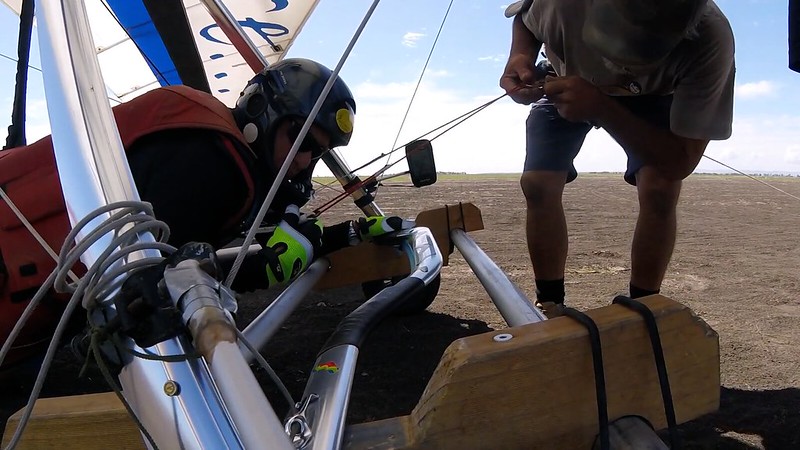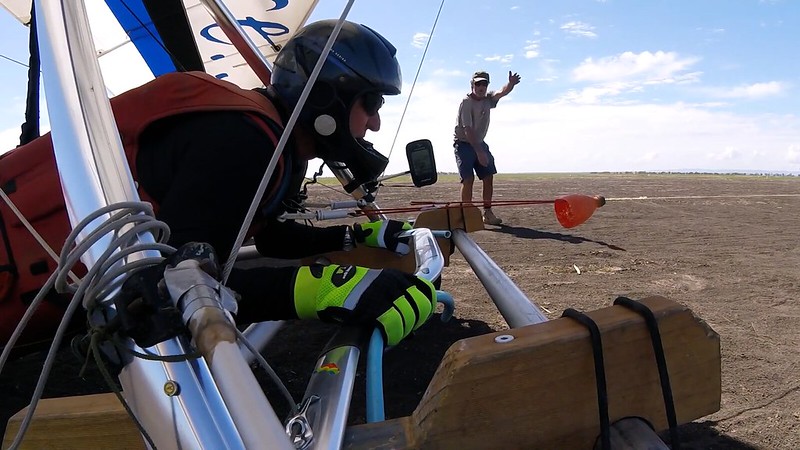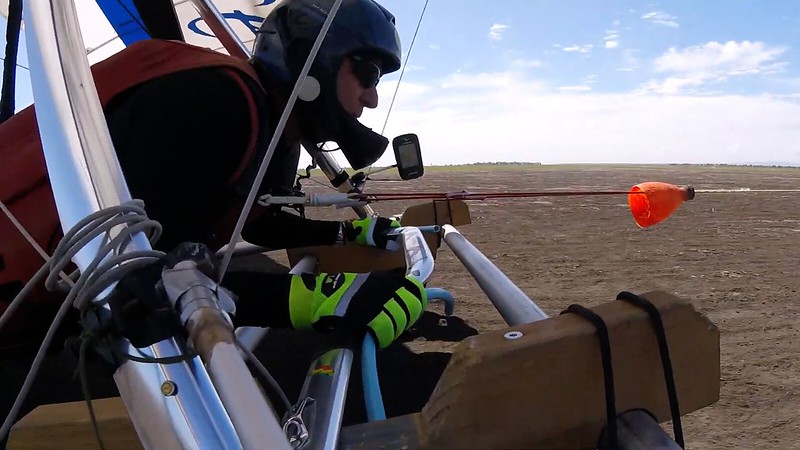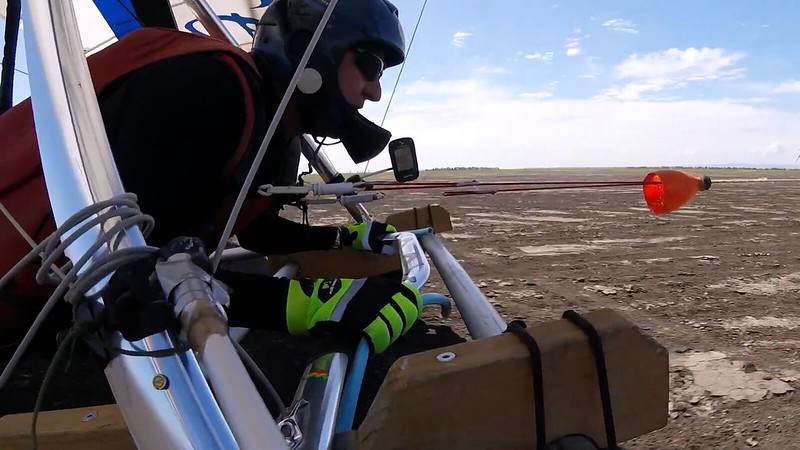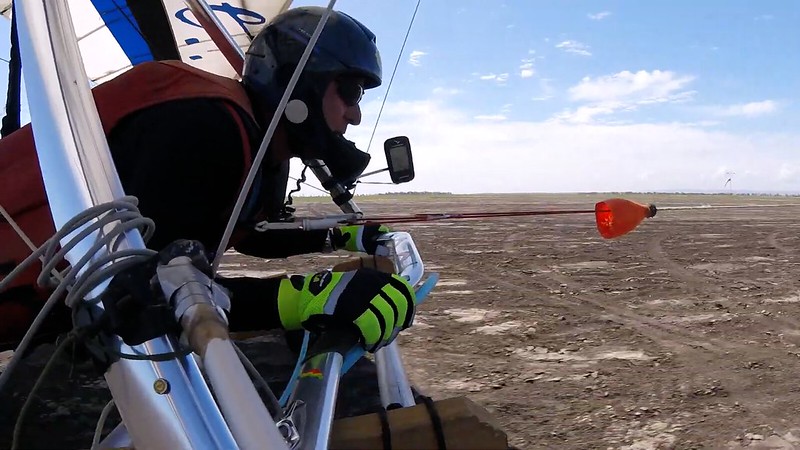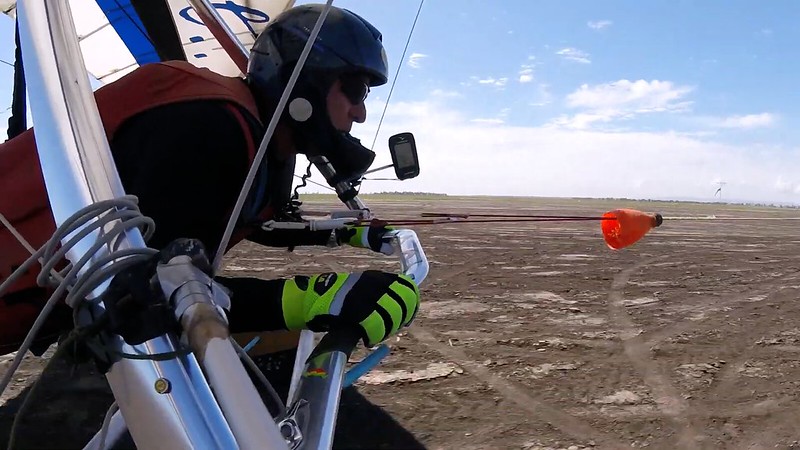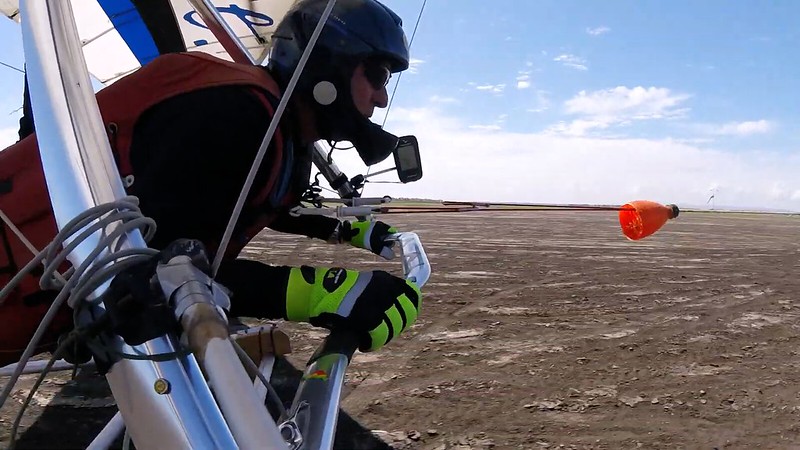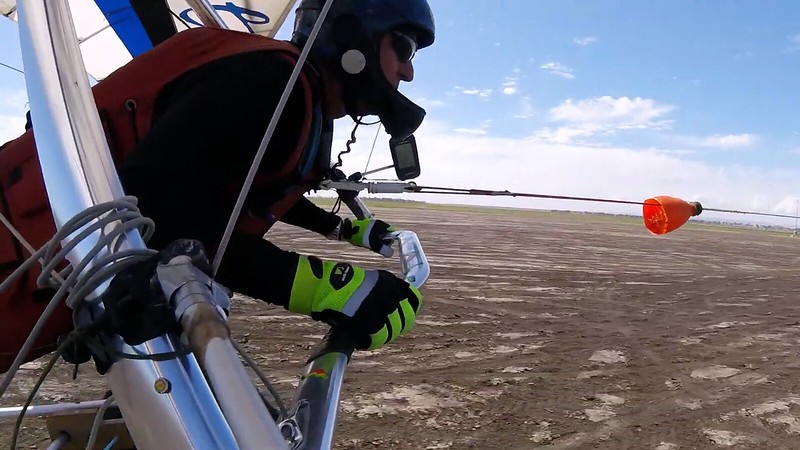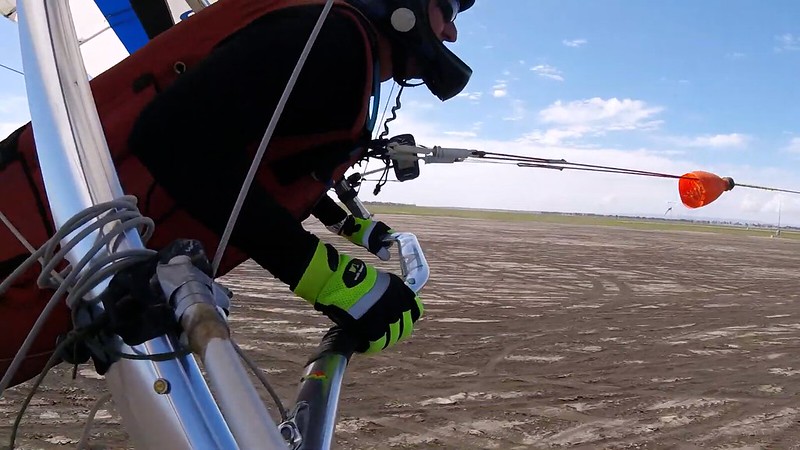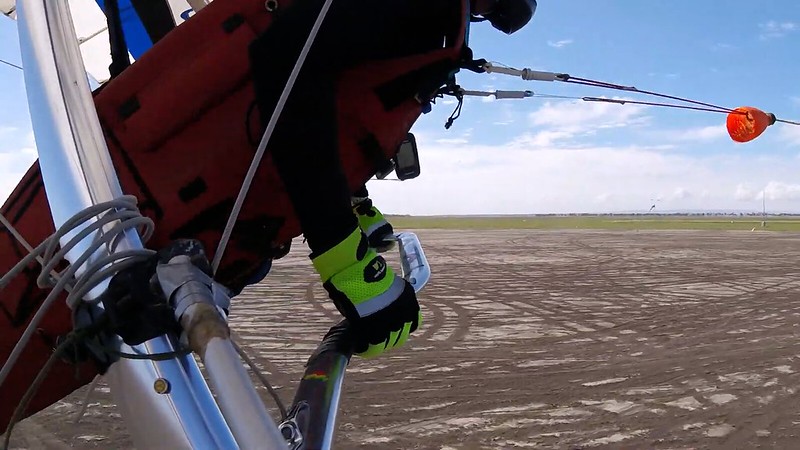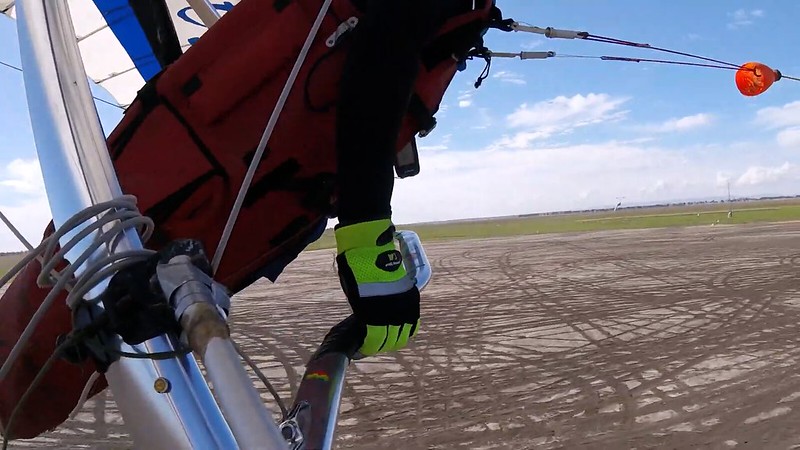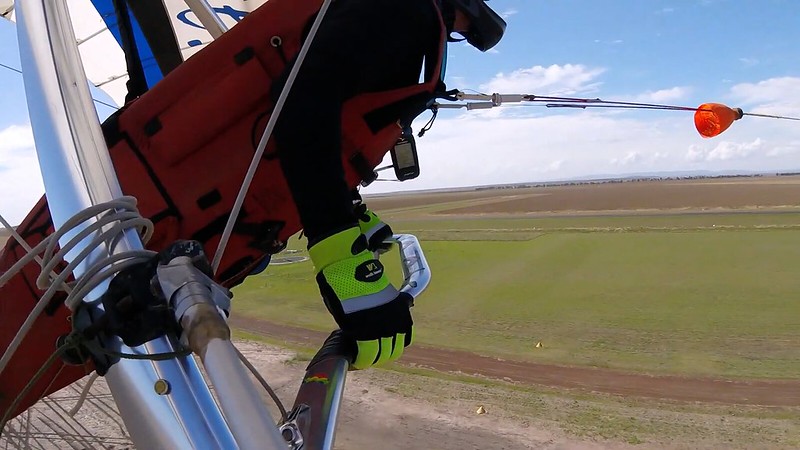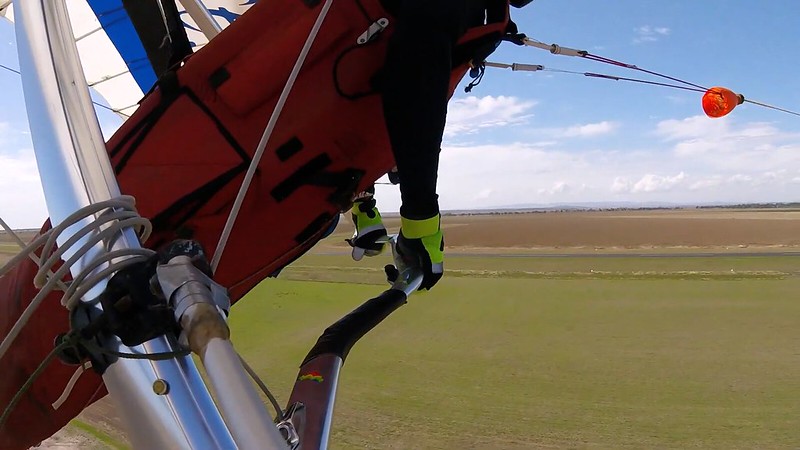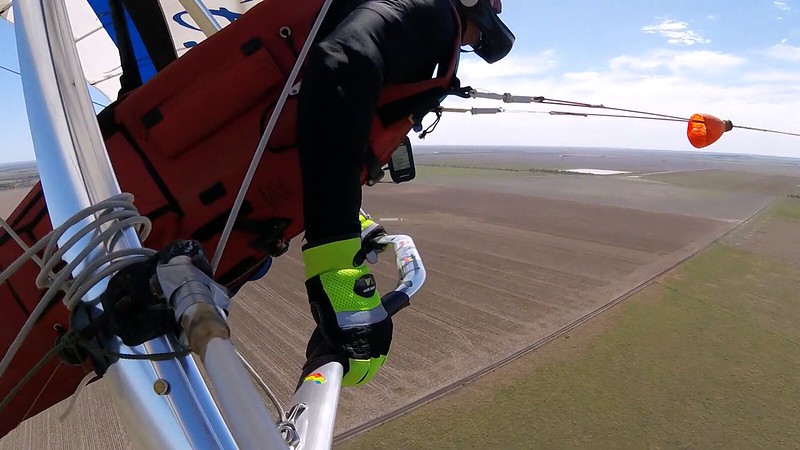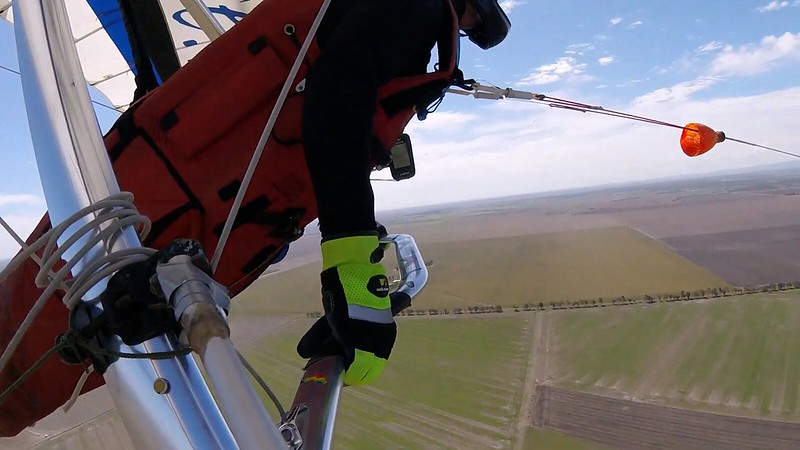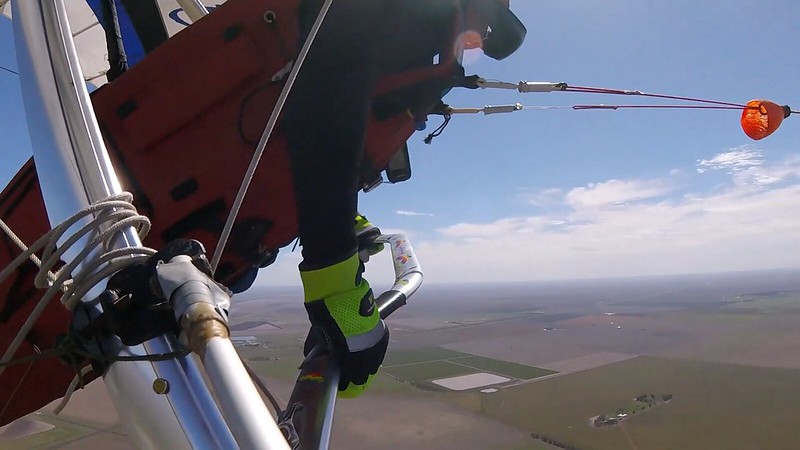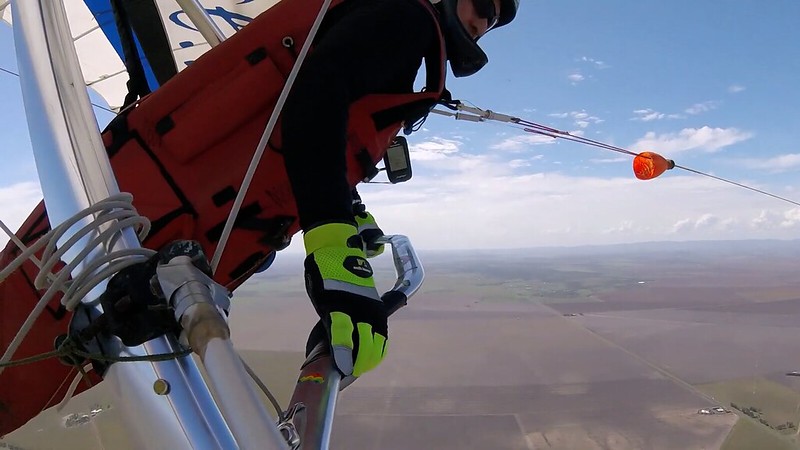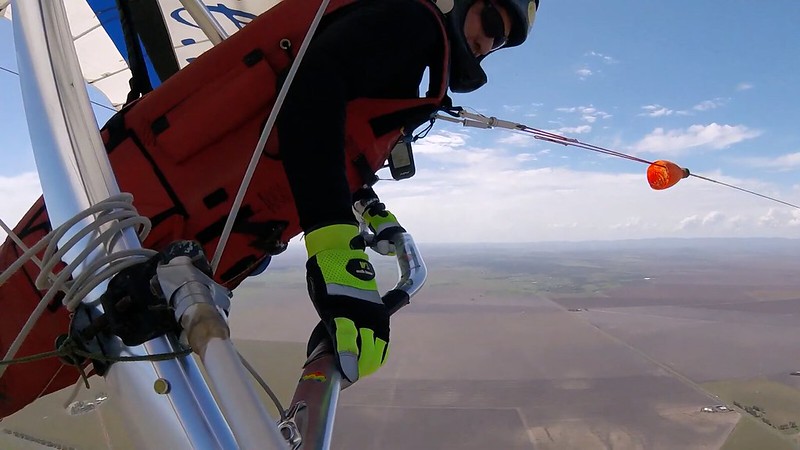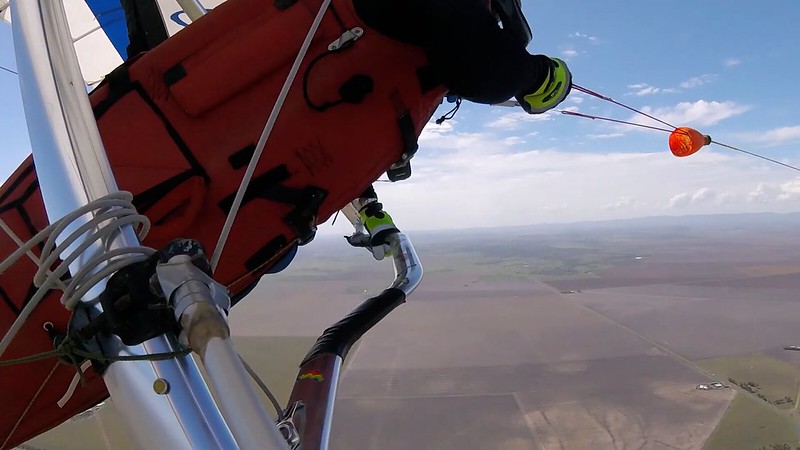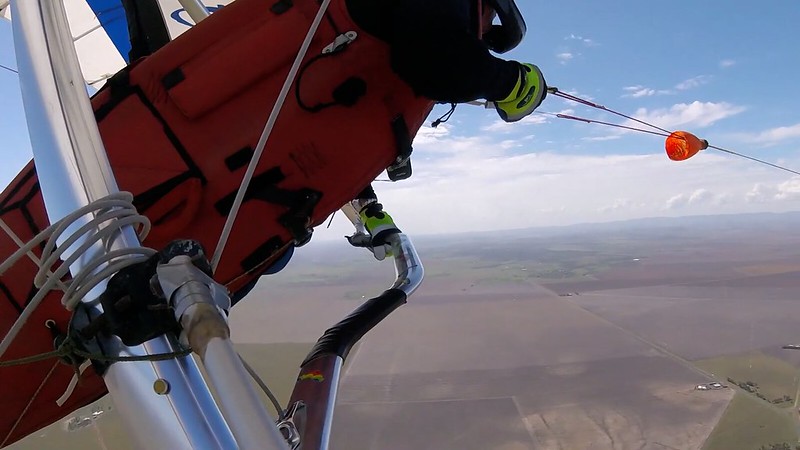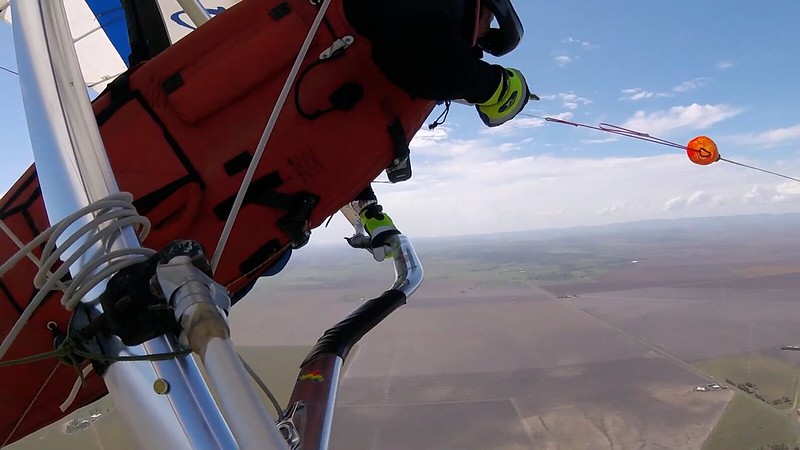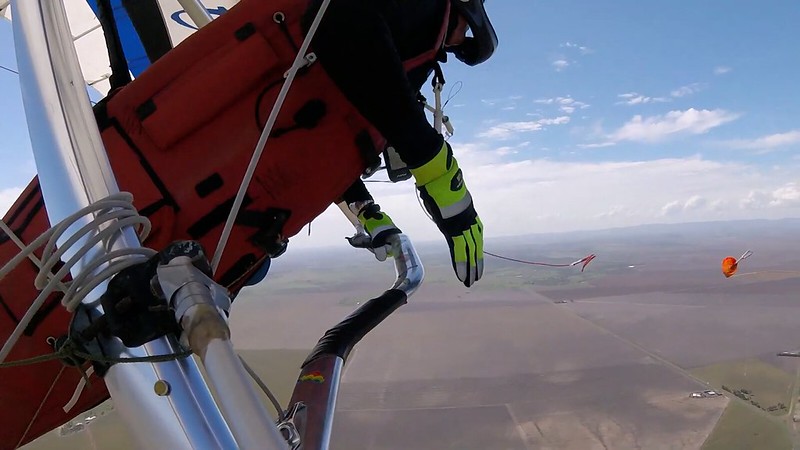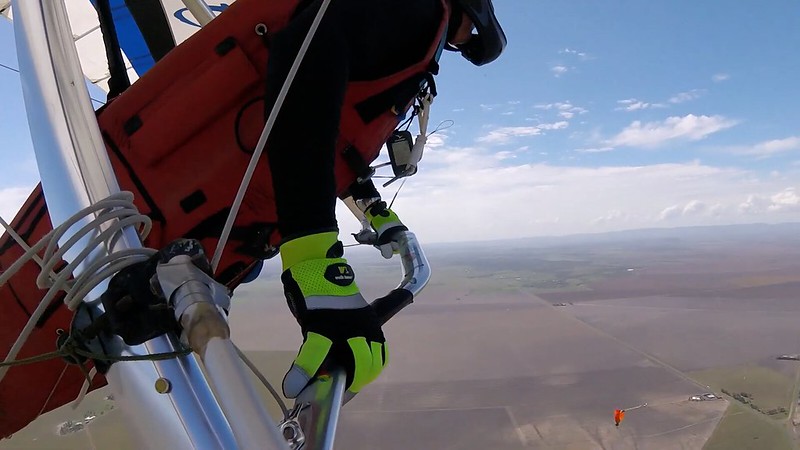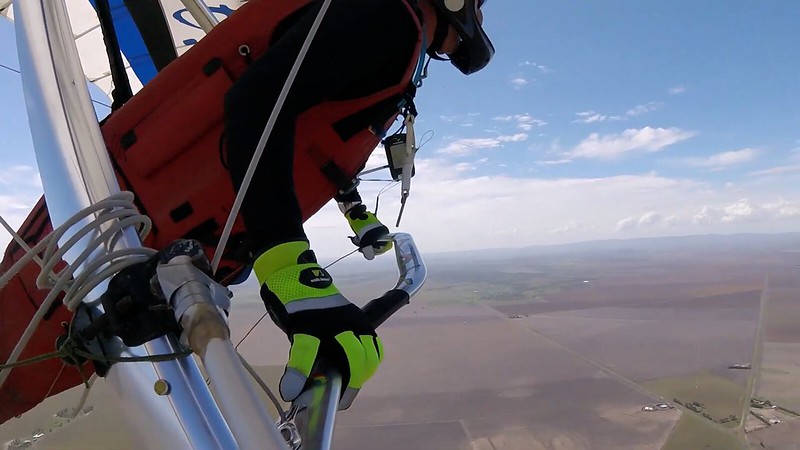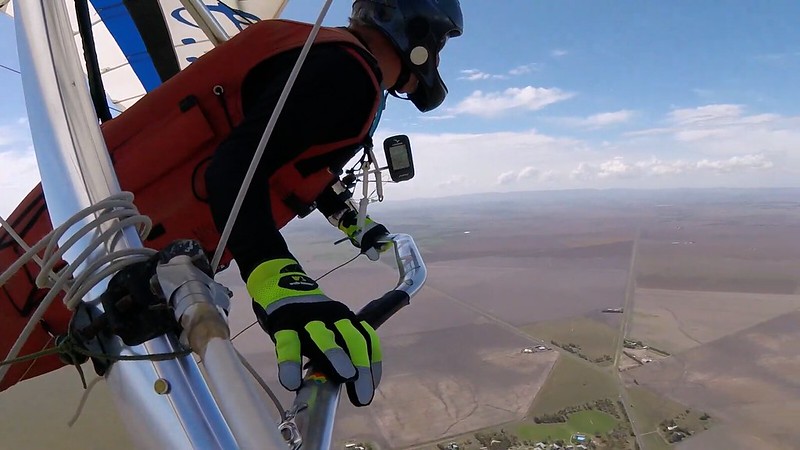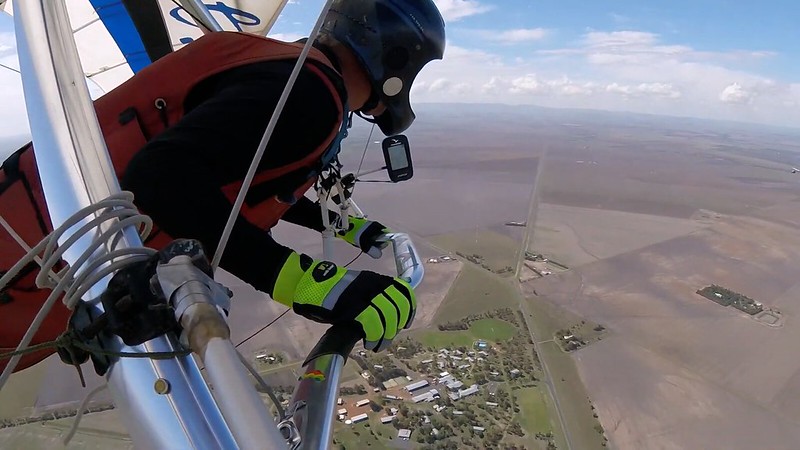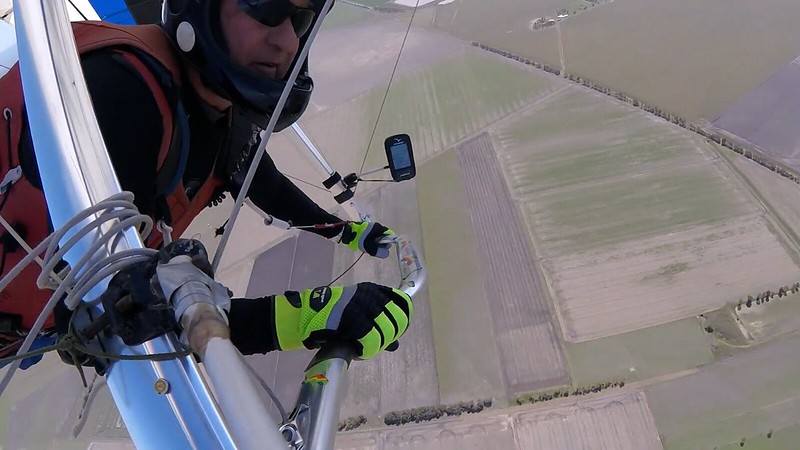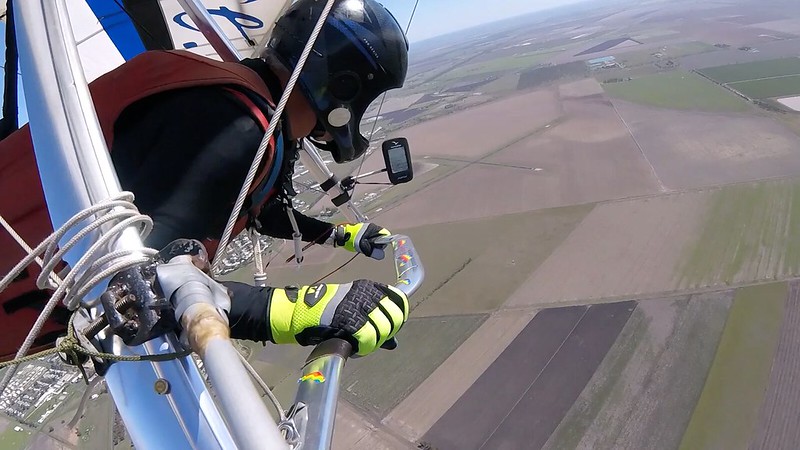Trim tab
That's how it's done in real aviation. Hang gliding...Elevator trim frees the pilot from exerting constant force on the pitch controls.
http://www.flickr.com/photos/meaneyman/130742003/
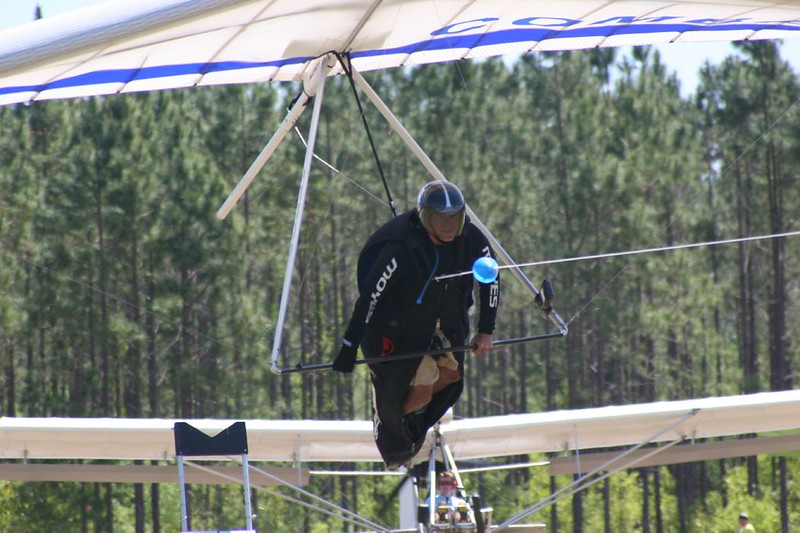
That's how it's done in real aviation. Hang gliding...Elevator trim frees the pilot from exerting constant force on the pitch controls.

Spin-off from a "suspension" topic discussion which began at:Harrison Rowntree - 2013/02/09
http://www.youtube.com/watch?v=oerbPQ7KgmQ
My brother and I just brought this Fun 190 from Dynamic Flight. It's been two months since I last flew. I stuck all the landings pretty well (although they were all nil wind).
Rohan gave me three tows to get back into the swing of things. It was about 10AM and there were weak thermals around. Enough to just maintain height and slowly climb, but I need to work on that a lot more.

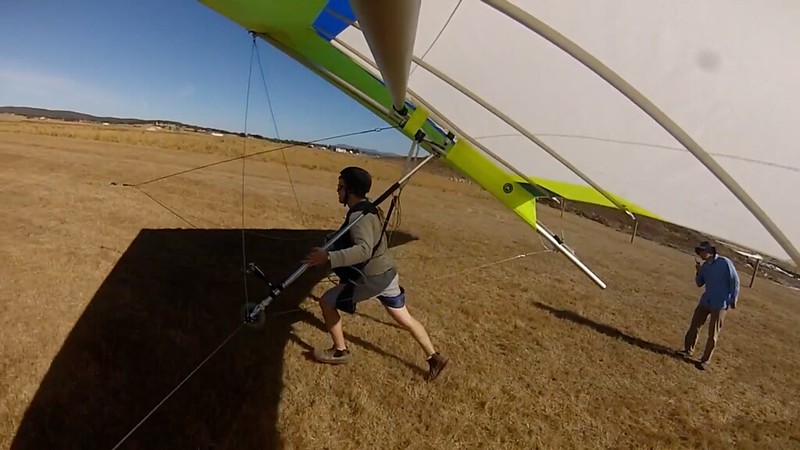
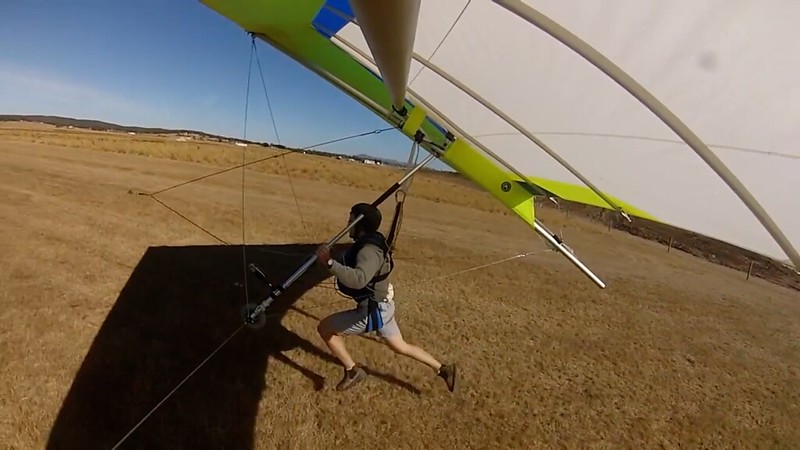
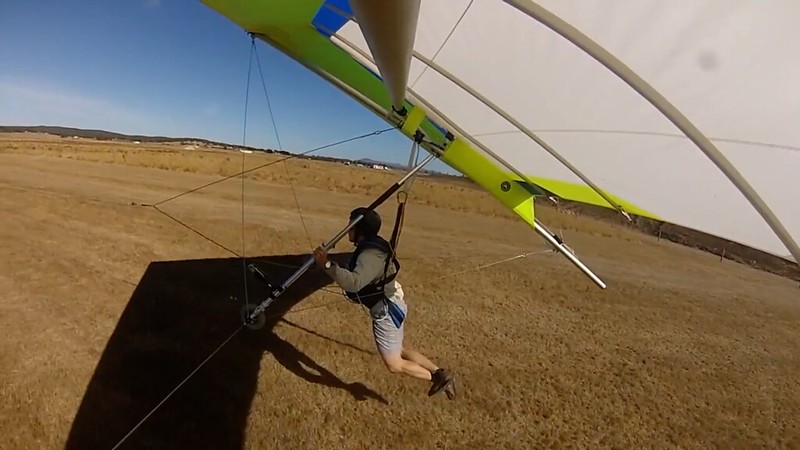
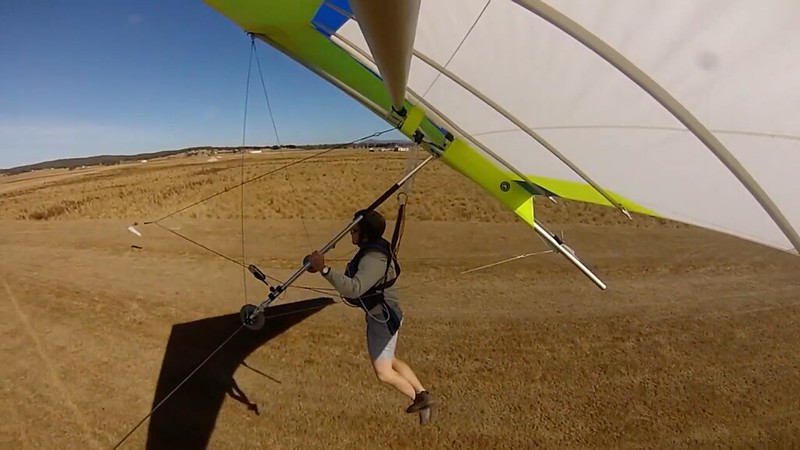




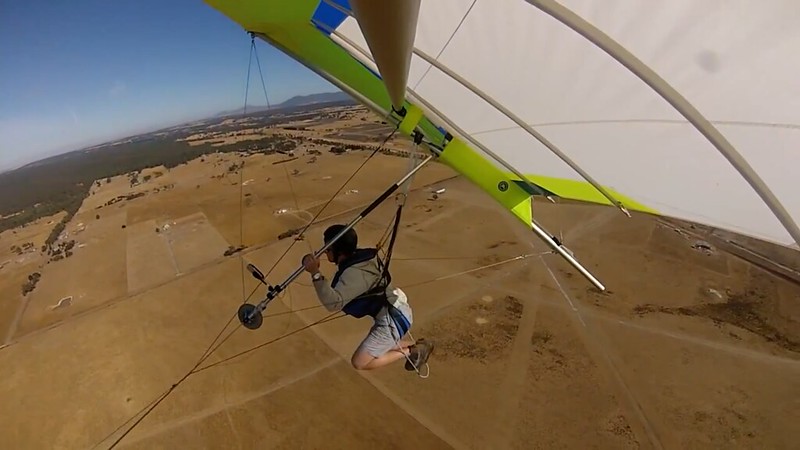
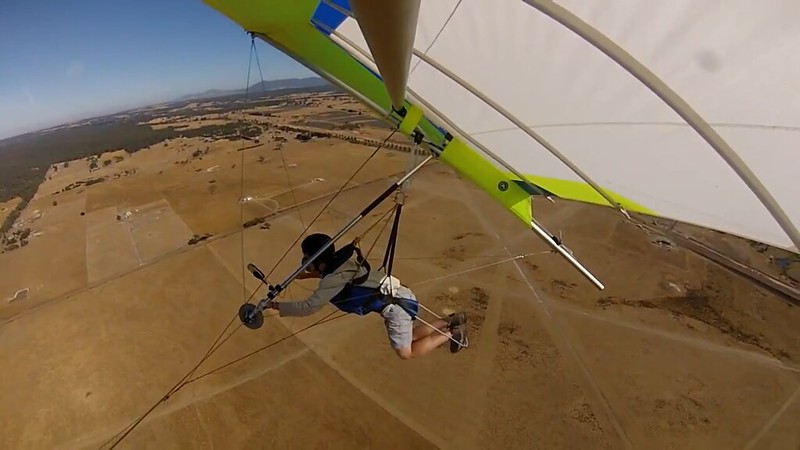
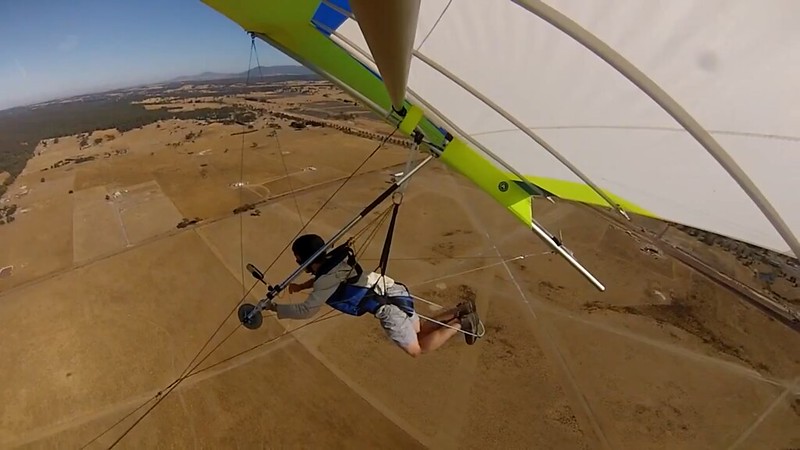
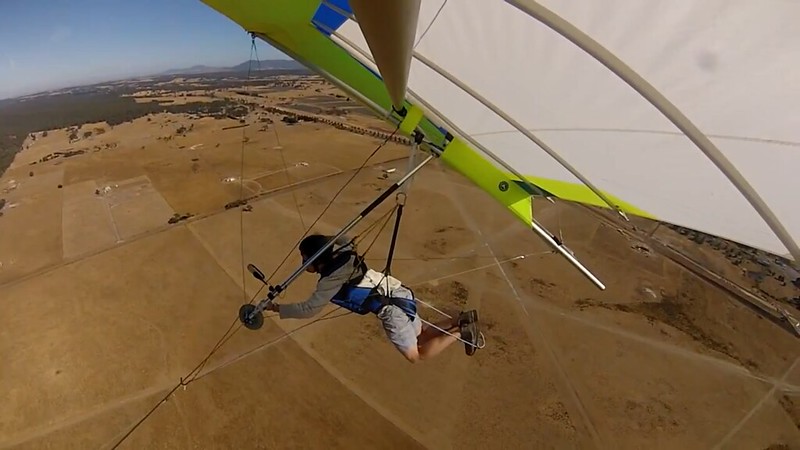
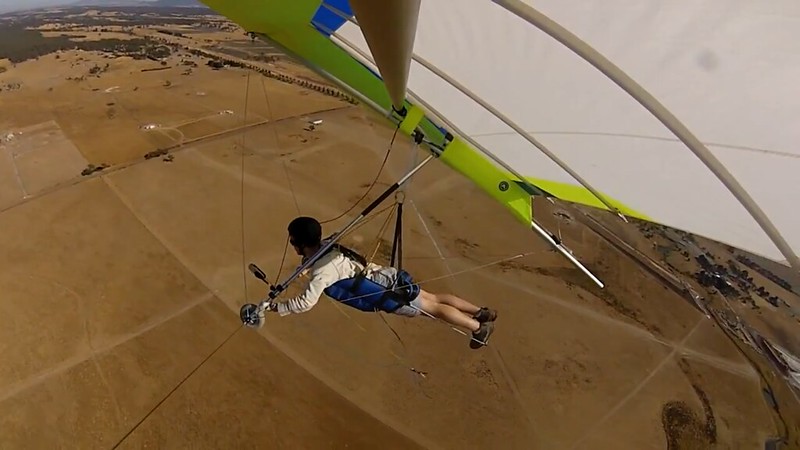



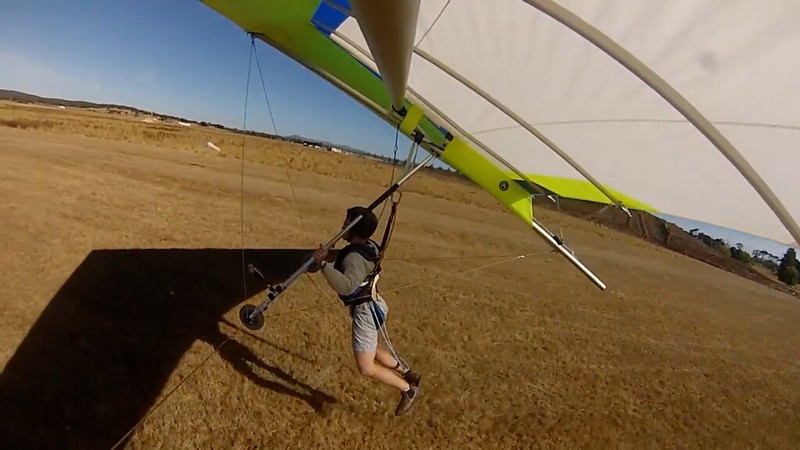
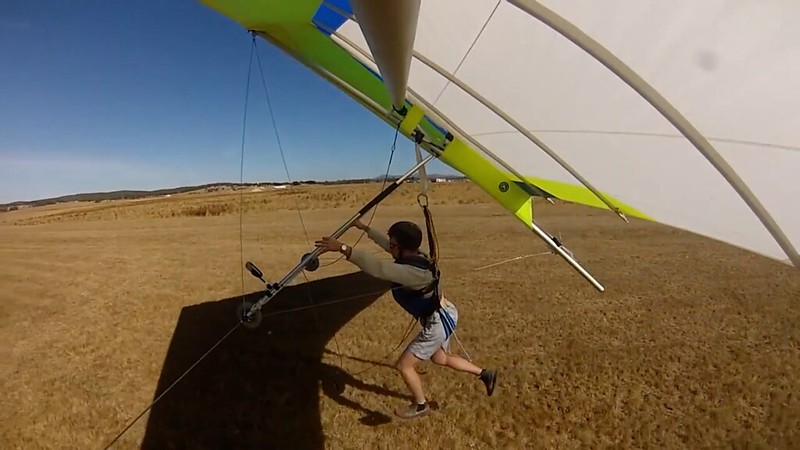


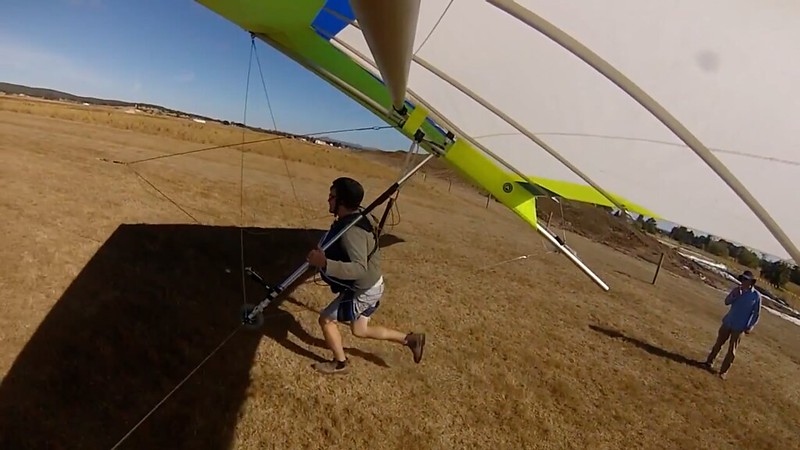


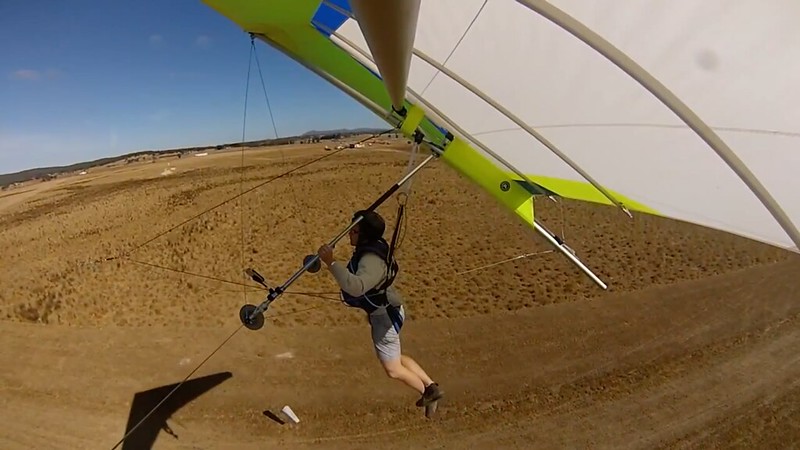
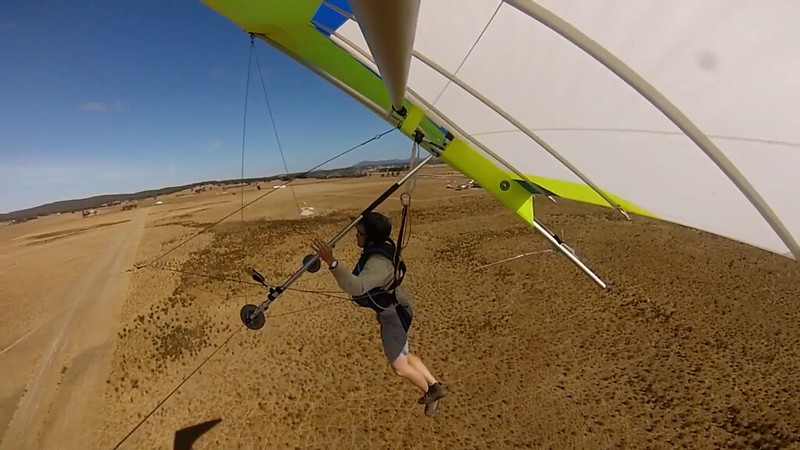

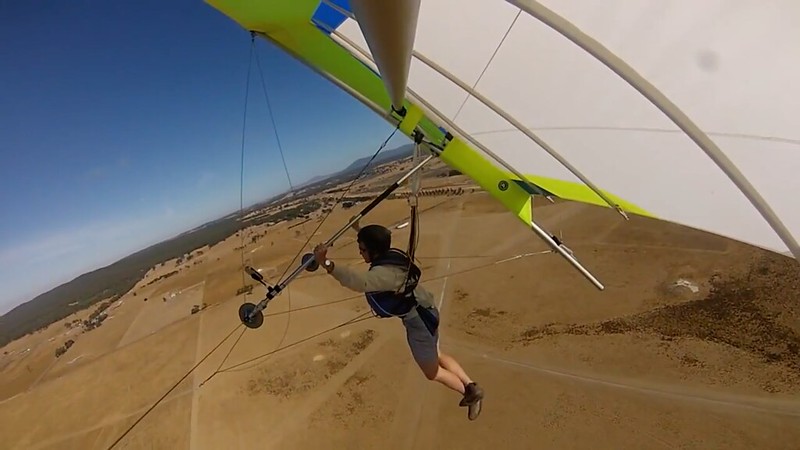
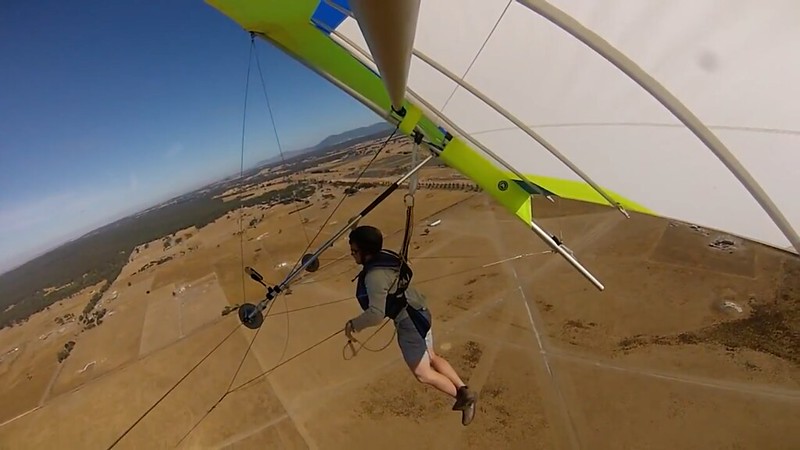
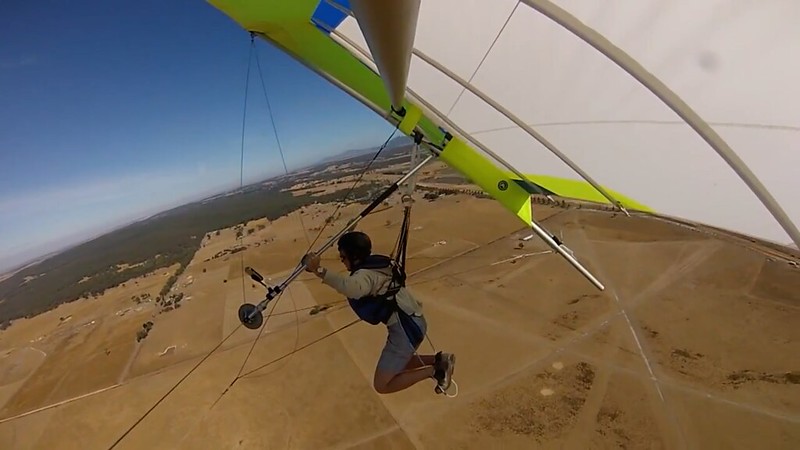




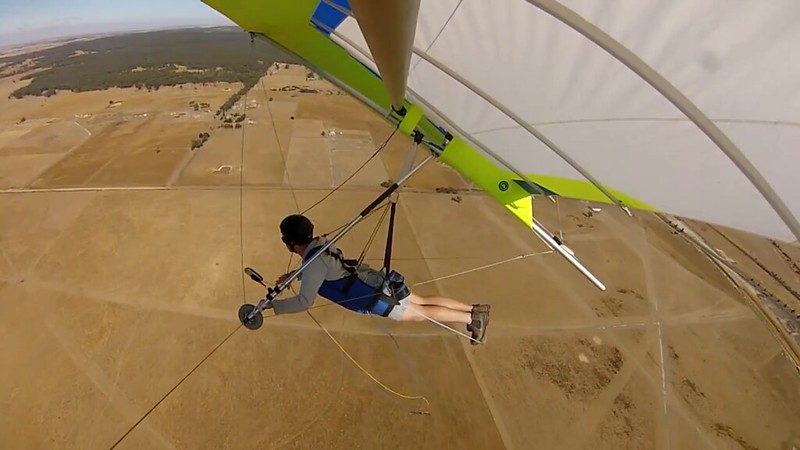
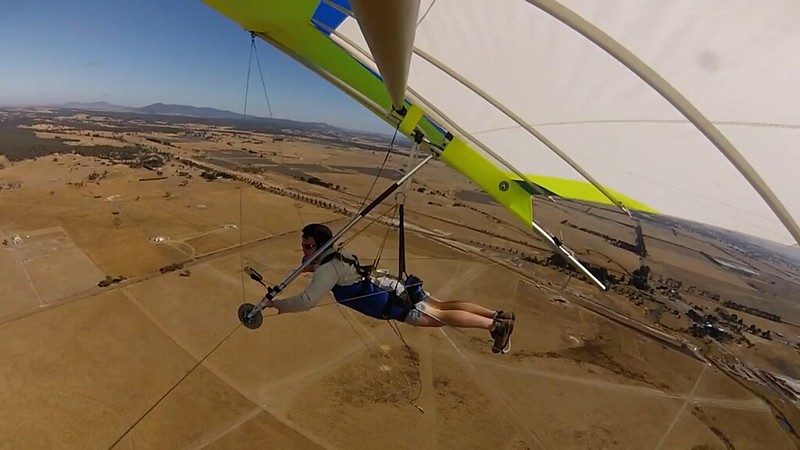
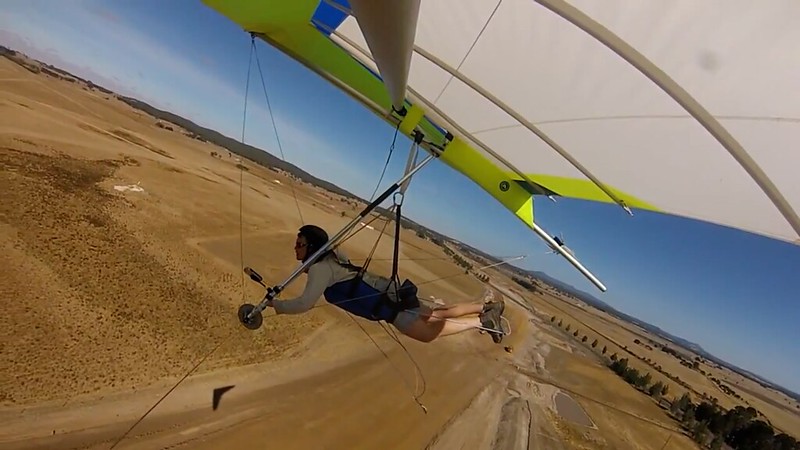
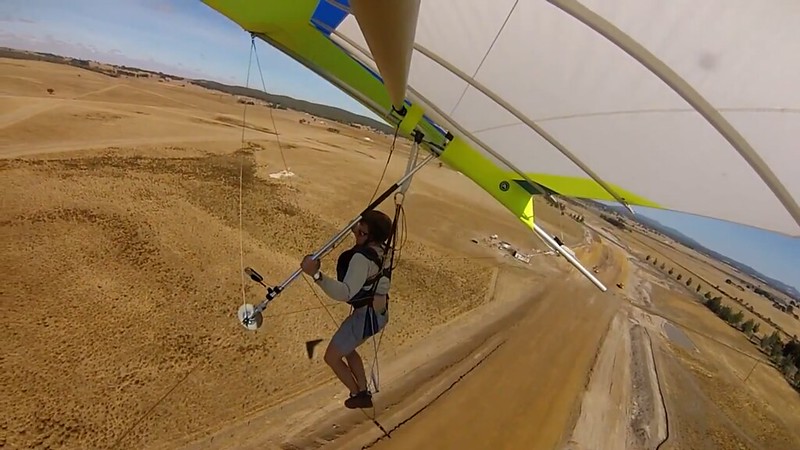
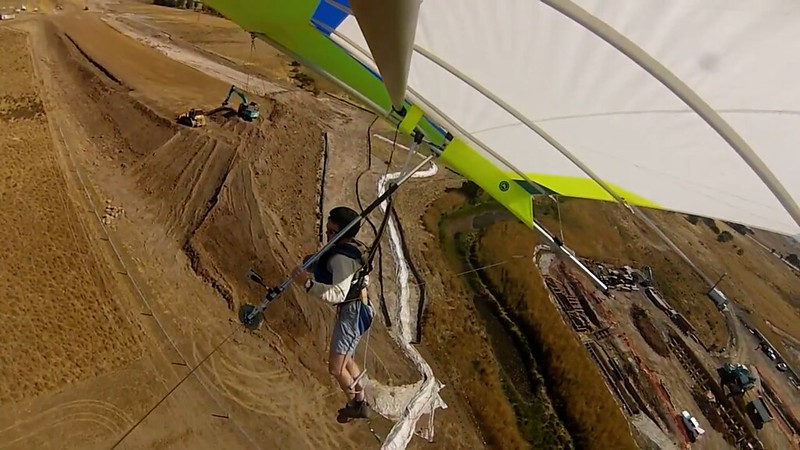

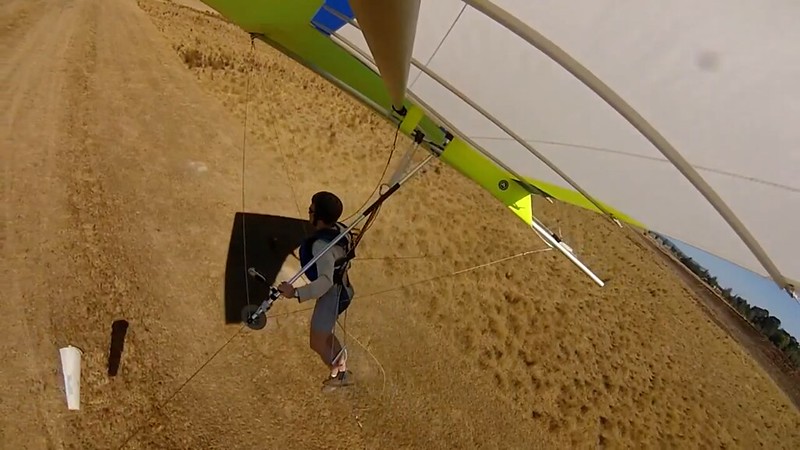
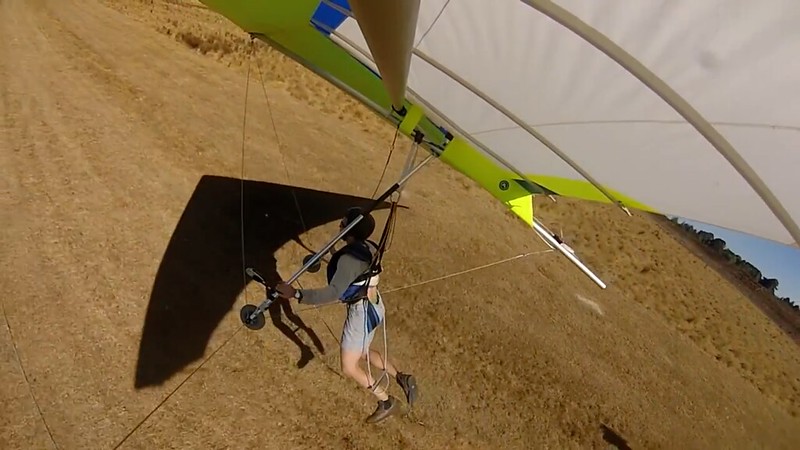

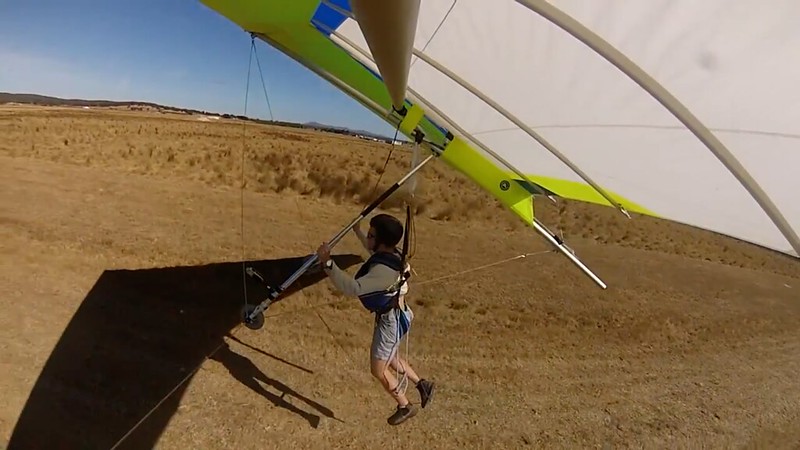
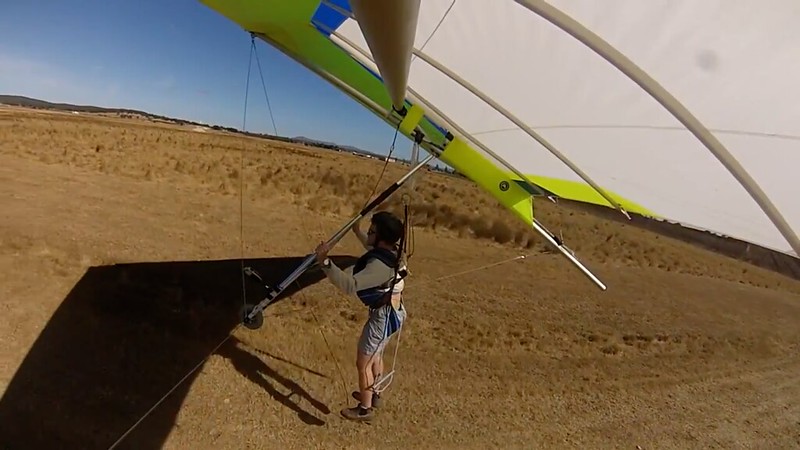
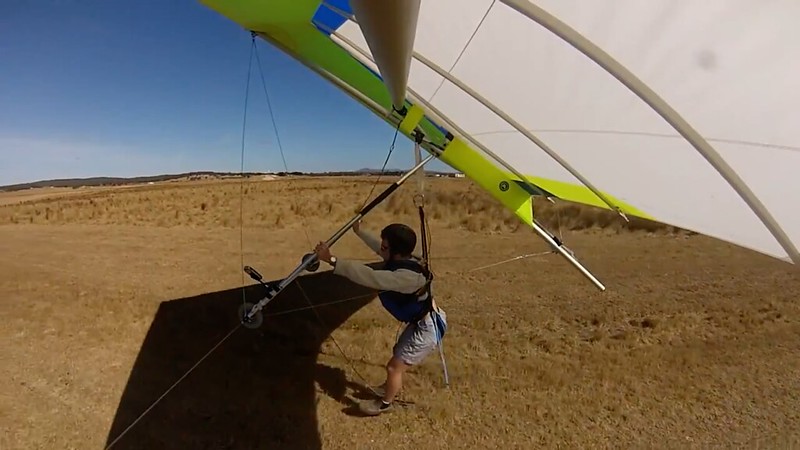
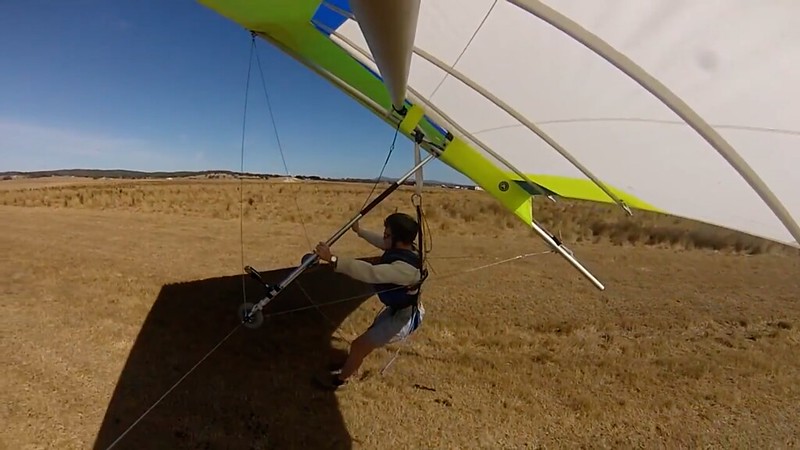

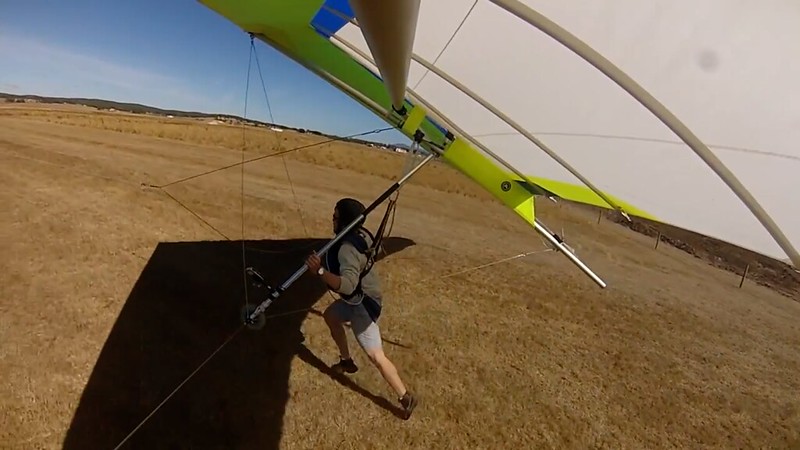


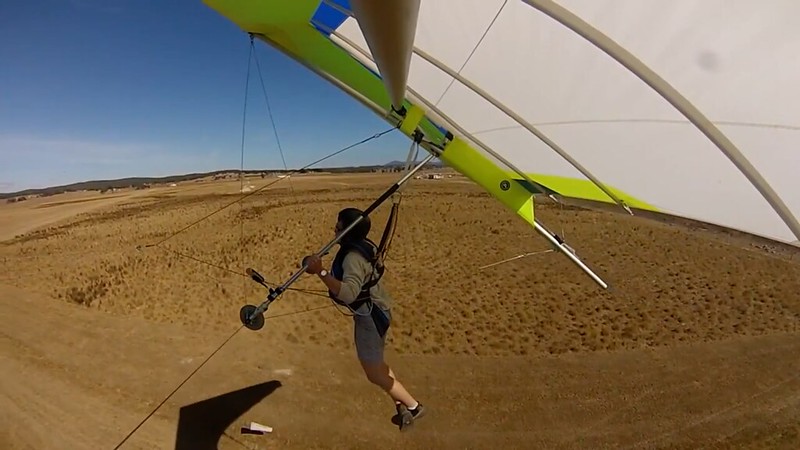
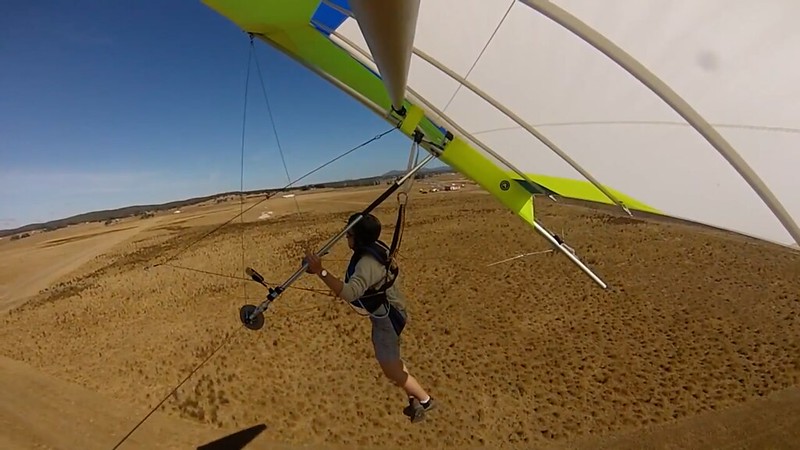
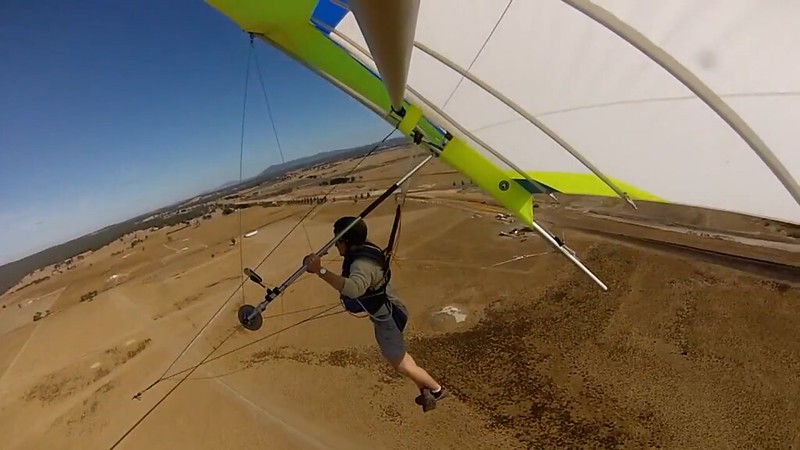
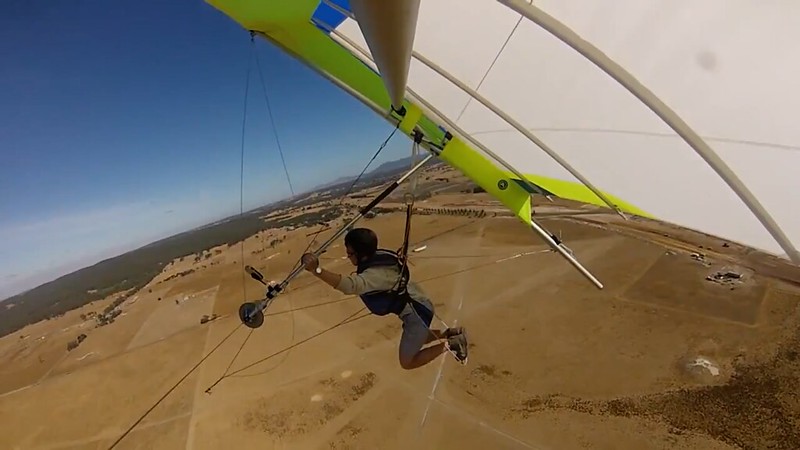
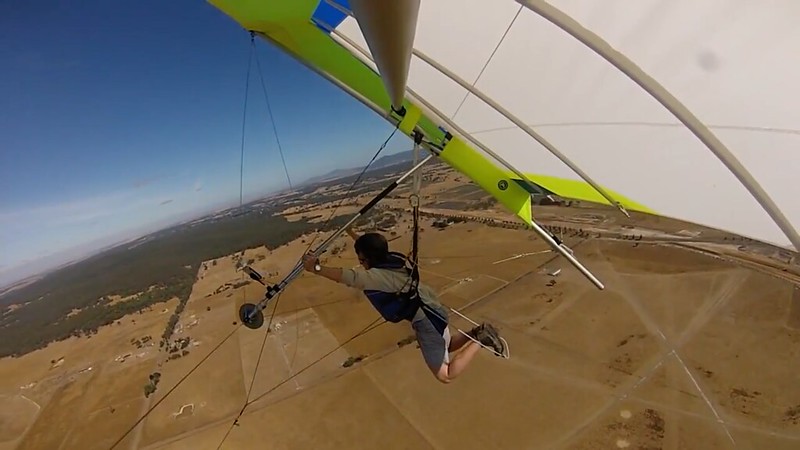

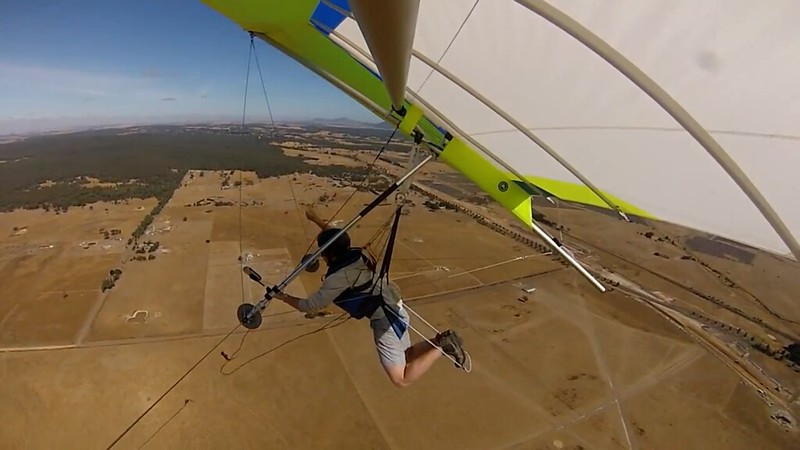
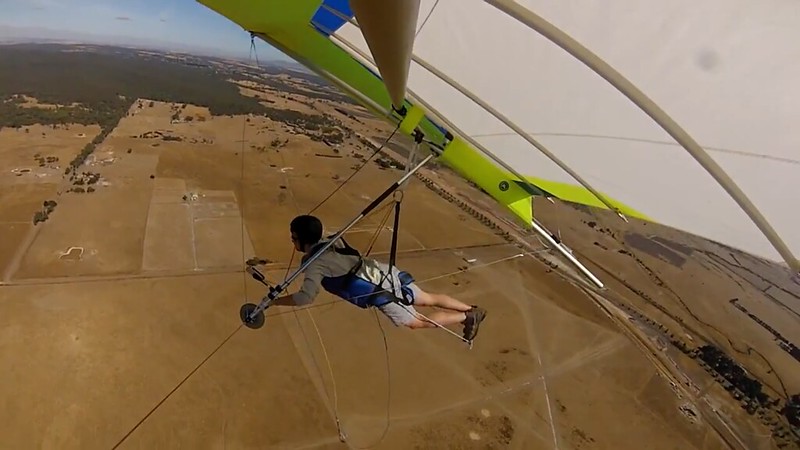

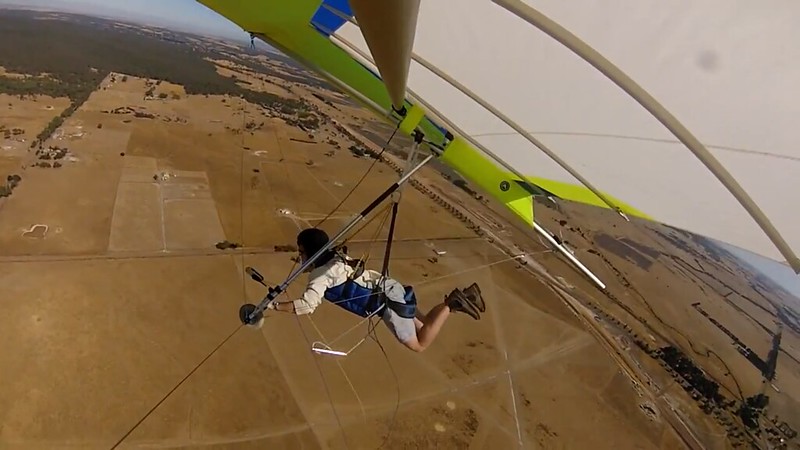
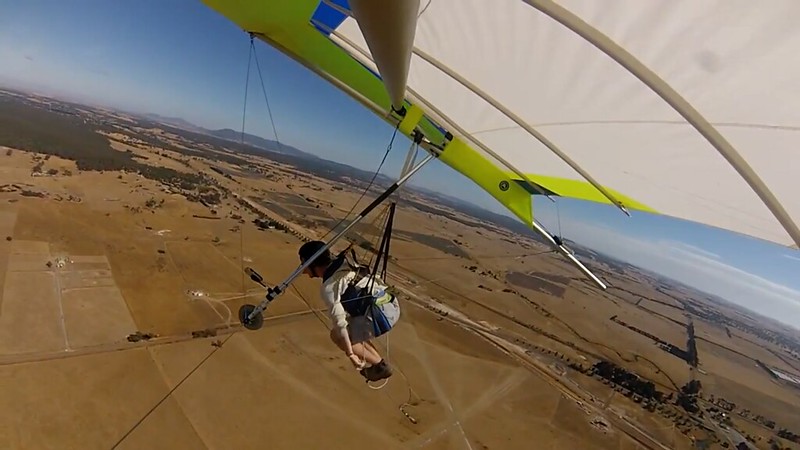


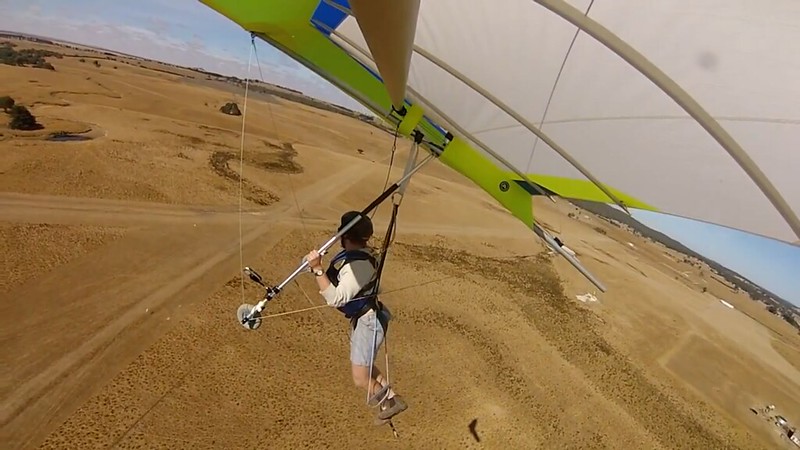
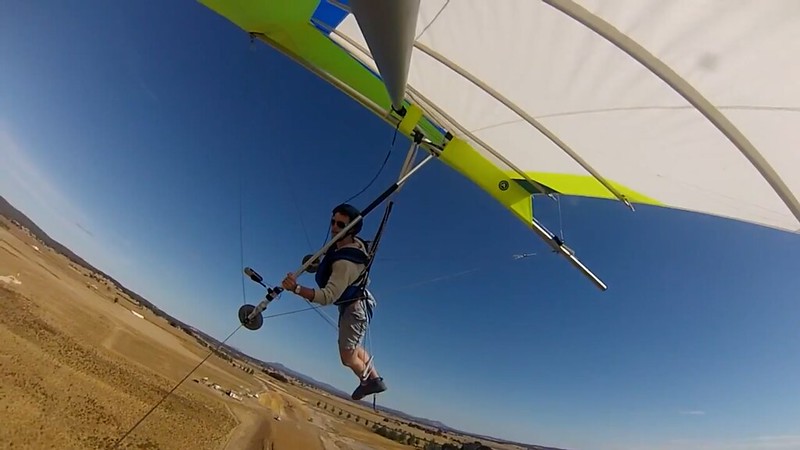



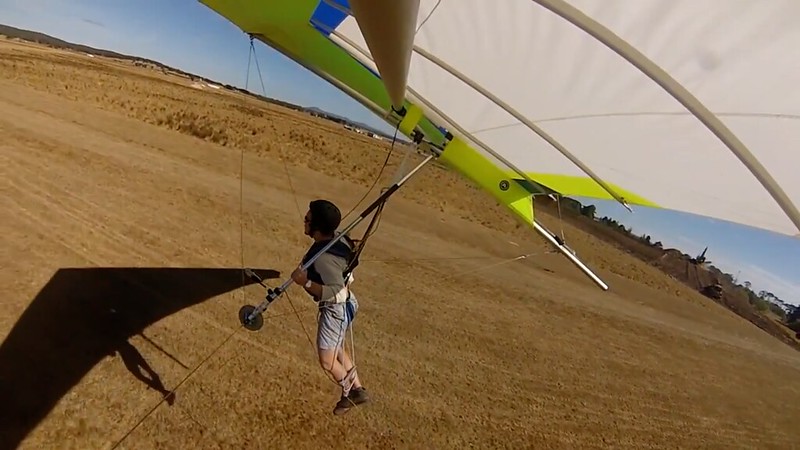
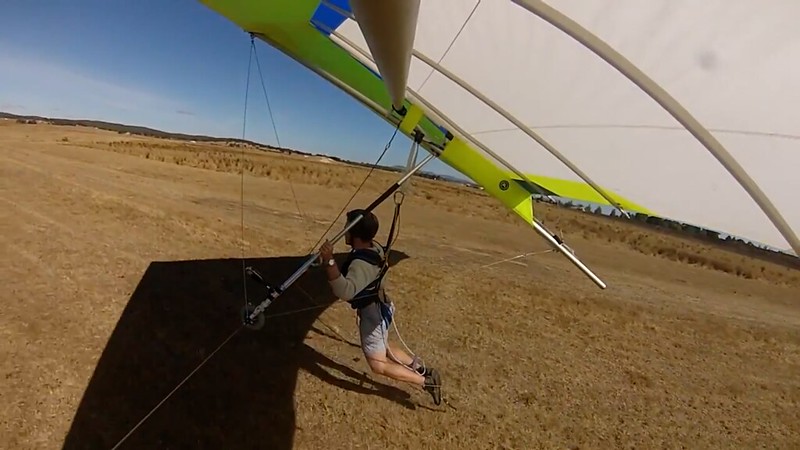
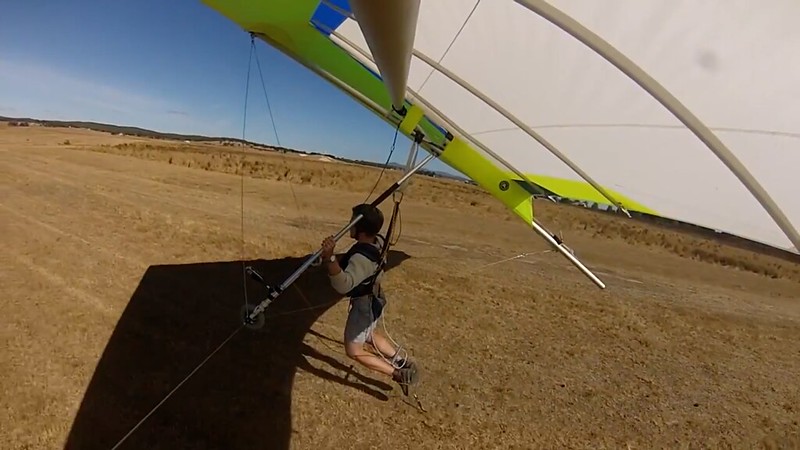

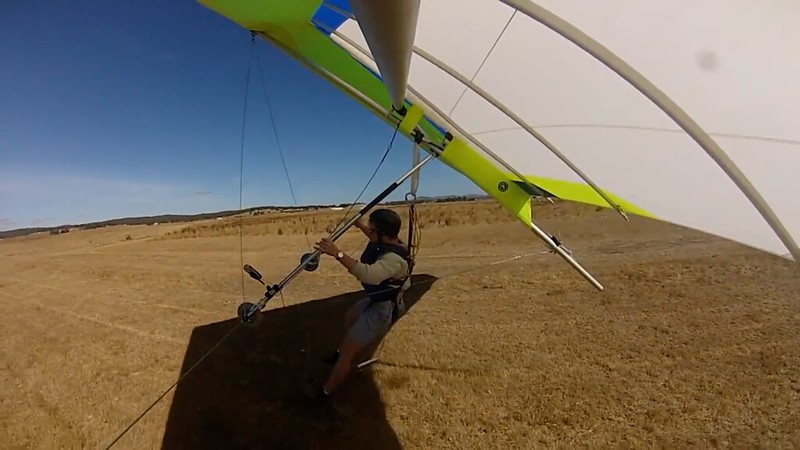
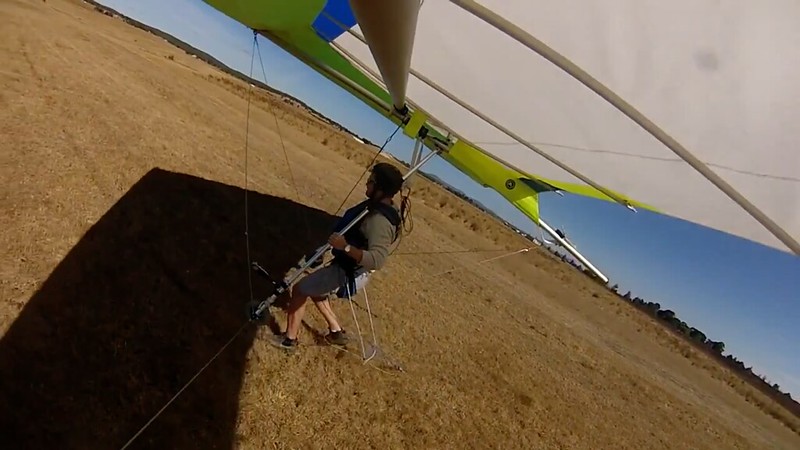
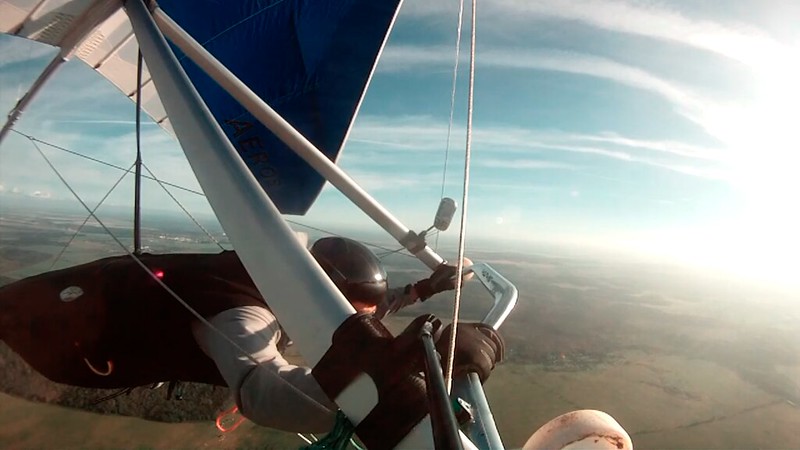
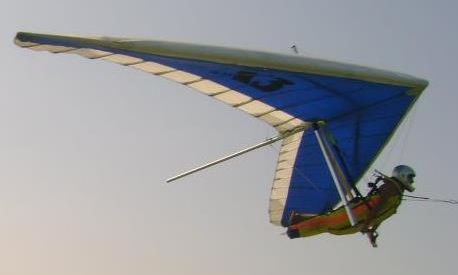
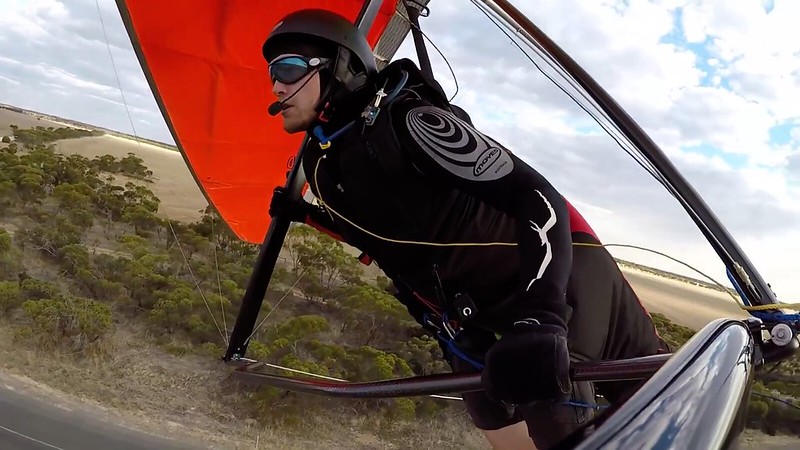





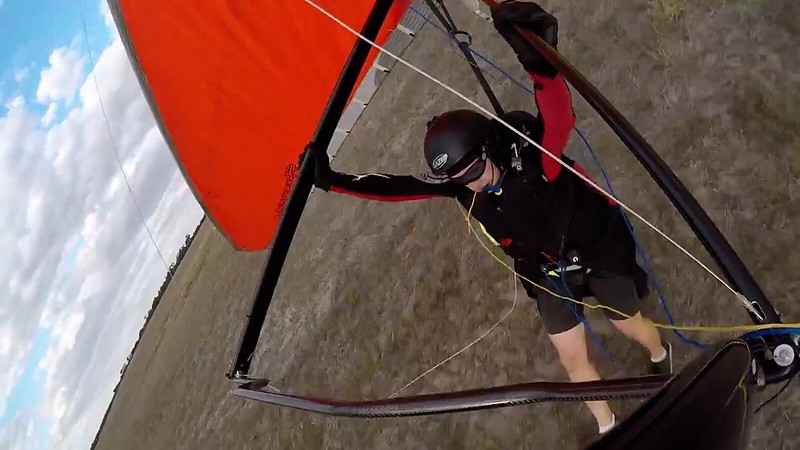

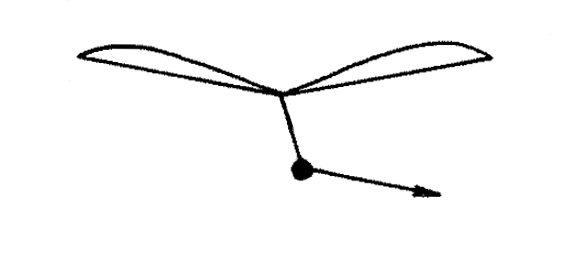
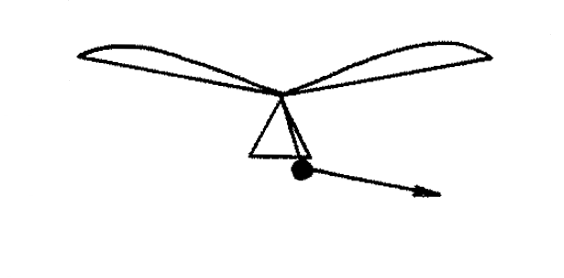
http://www.youtube.com/watch?v=uvhzoVC1UqMDonnell Hewett - 1982/09
In addition to the above mentioned roll and yaw tendancies, there is some sideways force on the pilot due to the body line. This is illustrated below:
As can be seen, this sideways force tends to pull the pilot over to the correct side to make the glider turn naturally in the proper direction.
Bonus questions...Ryan Voight - 2015/02/22
If you teach them how to pull the glider with the harness they'll learn to steer the glider through weight shift simply by running toward their target.
069-25104-(reversed)
http://c2.staticflickr.com/2/1572/26142964830_289bc3f2cb_o.png
http://c2.staticflickr.com/2/1647/25813034303_d557719e93_o.png
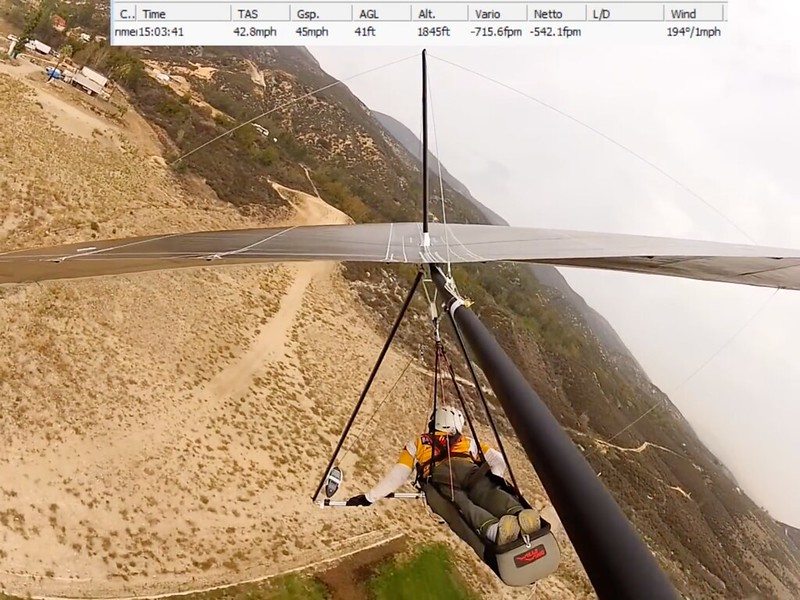
If that's true - and I rather doubt it is 'cause you've never provided us with a punctuation mark's worth of an account of this alleged near fatal incident, let alone the formal report you should've submitted to R.V. Wills - that was the single biggest disaster in aviation history. Modern towing would've evolved from the common sense Brooks Bridle foundation rather than this ultra lethal lunatic fake physics cult base of yours.Donnell Hewett - 1980/12
Now I've heard the argument that "Weak links always break at the worst possible time, when the glider is climbing hard in a near stall situation," and that "More people have been injured because of a weak link than saved by one." Well, I for one have been saved by a weak link...
Thermal Cowboy (Tyson Taylor) - 2016/04/12
Some footage from April and some of the 2016 Cowboy Up Wills Wing Demo Days
mirageg4
Looks like you handled the weak link break like a pro.
http://ushawks.org/forum/viewtopic.php?f=2&t=3601Tyson
Thanks Mark, I couldn't remember if I pulled in or not when it broke. THat was my first WL break and I guess all my training took over
http://ushawks.org/forum/viewtopic.php?f=27&t=2434Craig Muhonen - 2019/11/15 17:36:39 UTC
Here is a statement to me at age 13, by my father, who was teaching me how airplanes worked, and why they worked. He said "a nose heavy airplane is hard to fly, but a tail heavy airplane....flies once". He taught me all about 'trim', and angle of attack. Later on when I went for my rating as a pilot, my instructors had practiced with me over and over, about these things. Although I was a bit nervous when I 'soloed' and flew my first cross country, I knew that my step by step training would serve me well, so I "stepped" myself into the atmosphere. Flying "wings level" and "turning" at some altitude is remarkably "easy", but close to the ground, getting ready to land, and take off, brought AOA and trim to the forefront.
Massive pain-in-the-ass stills project on a rather interesting video - low, medium, high performance gliders and we get to see them launching two and one point from the same camera in the same position. The pre Wills Wing Demo Day day is highly likely 2016/04/02 or 03. There's some crud on the lens which results in a rather unfortunate smudges - a prominent one lower center and a less obnoxious one to its lower left - of all the earlier sequences but they're mildly useful in establishing that all those launches are occurring on that single day.Bob Kuczewski - 2019/11/18 11:04:16 UTC
This video from the Houston Club shows a weak link break during an aero tow:
http://www.youtube.com/watch?v=nVeI7oiwRwM
The tow starts at about one minute and 30 seconds (1:30) into the video. The weak link break isn't easily visible, but happens shortly after 2 minutes into the video.
The glider's mild response to the weak link break reminds me of the static tow weak link break demonstrated in one of Bill's videos. It seems obvious that the glider's undesired response to a weak link break will increase with the strength of the weak link.
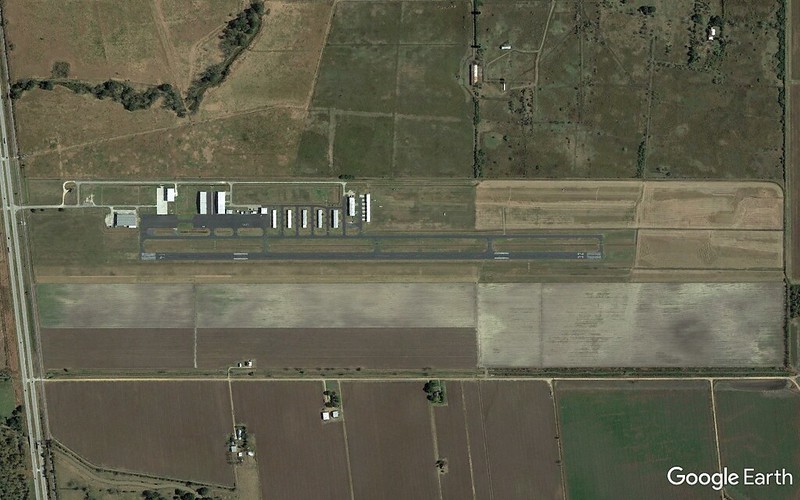
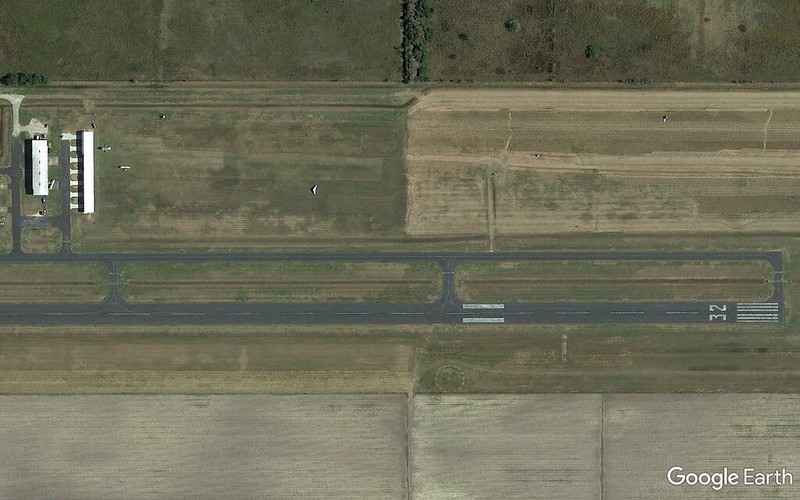
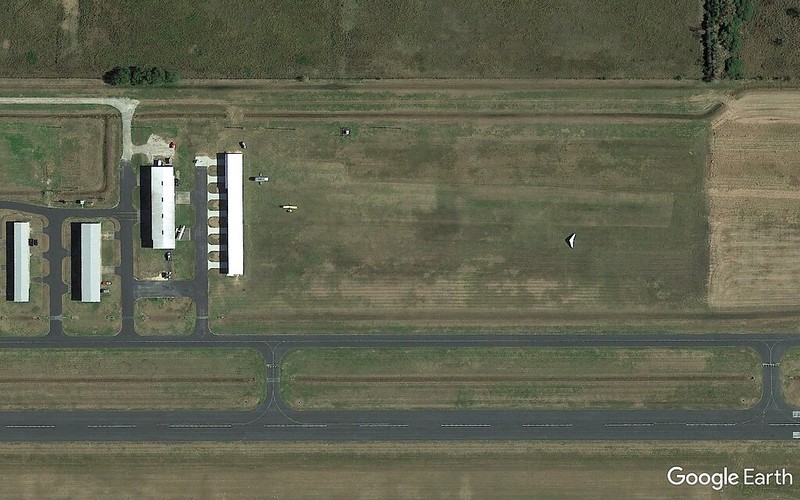
Keep up the stellar work guys. And long live Tiki. (Pity Bart's no longer around to help keep us up to speed on AT weak links.)Zack C - 2010/11/23 05:23:34 UTC
In September of 2010, hang gliding safety activist Tad Eareckson entered a discussion on the Houston Hang Gliding & Paragliding Association's discussion group that would result in his being banned from the group within two months. But despite the controversy over Tad's 'arrogance' and 'condescending tone,' I was impressed by his knowledge, logic, and respect for science, which included a great deal of his own research and experimentation. My attempts to carry out a rational discussion with him were continually sabotaged and eventually aborted by other group members, many with little interest in or comprehension of the discussion.
...fuckin' surprise. Compare/Contrast the two pointers. That's where this video really shines like no other I've yet to stumble across.Davis Straub - 2011/06/16 05:11:44 UTC
Incorrect understanding.
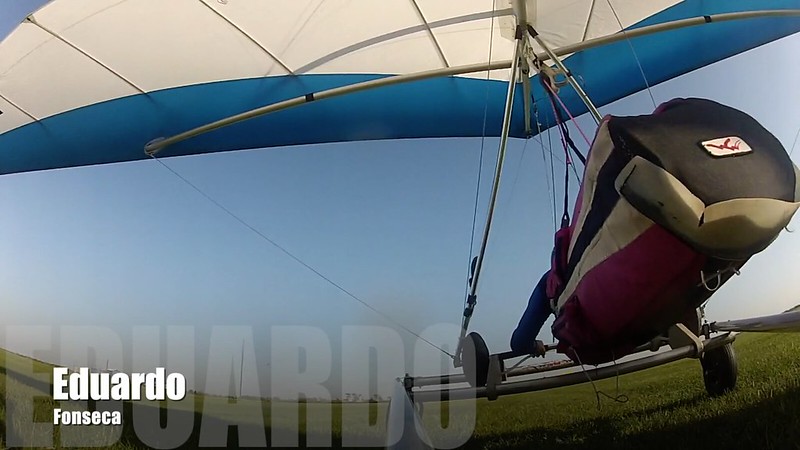
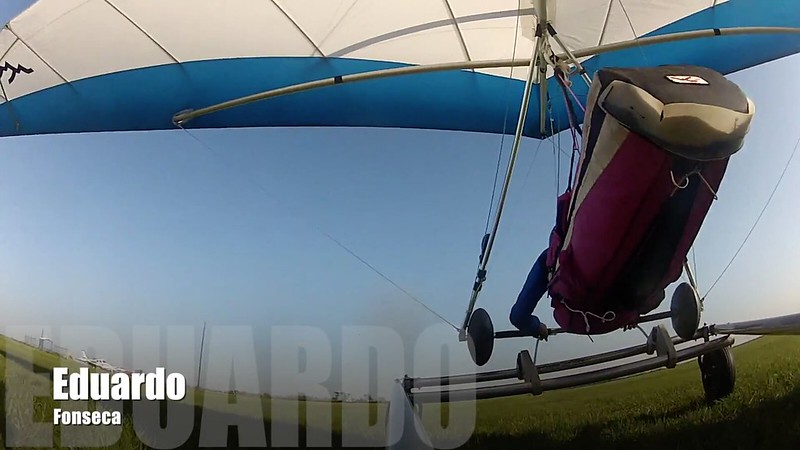
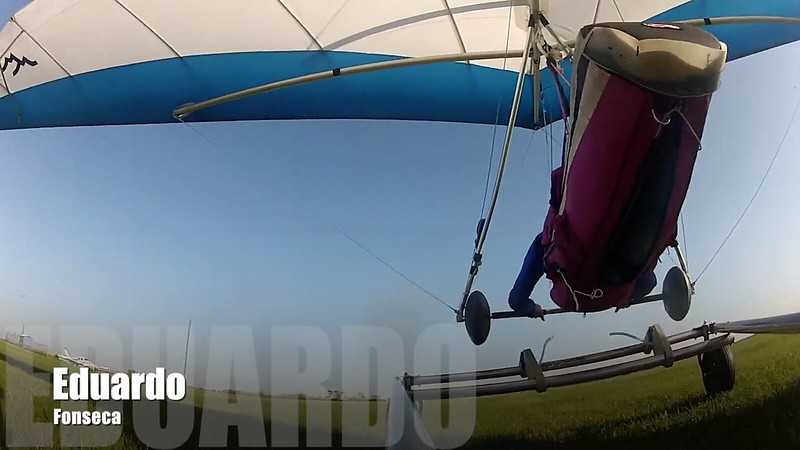
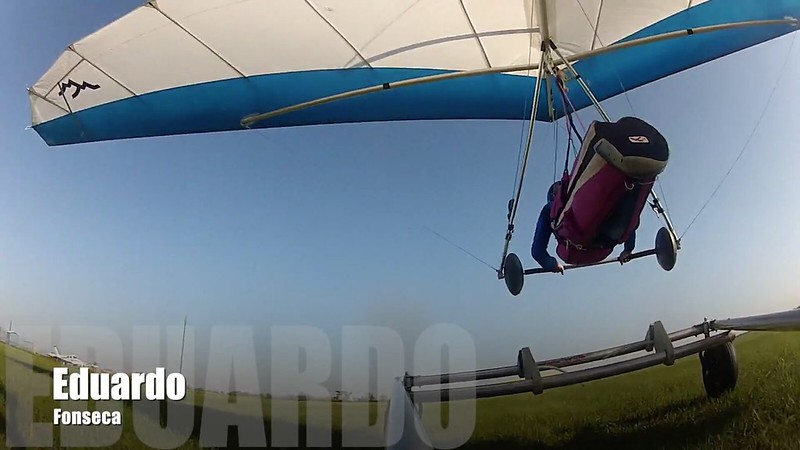



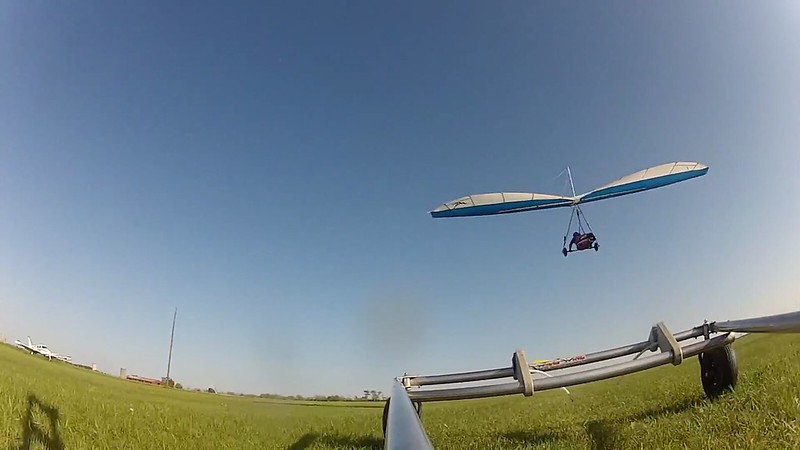

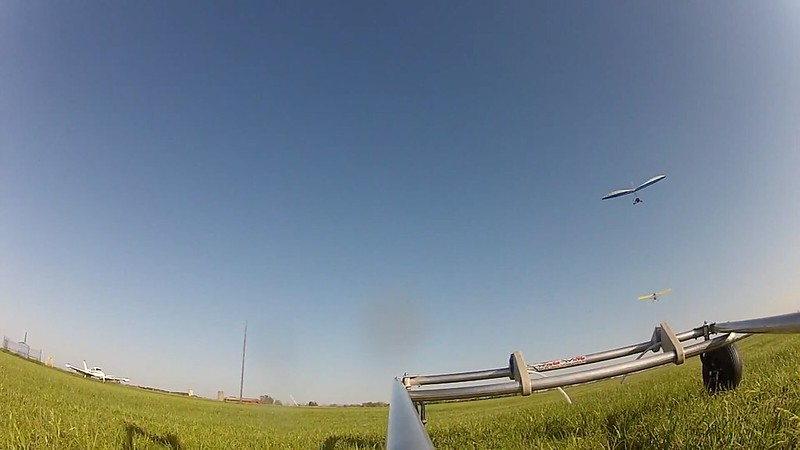

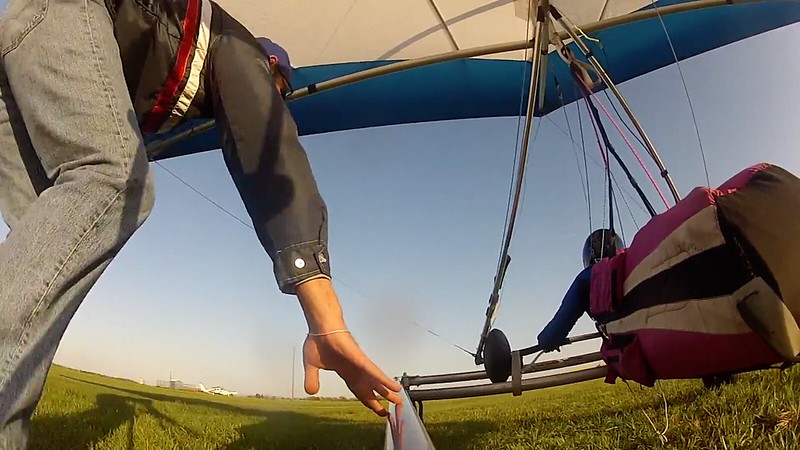
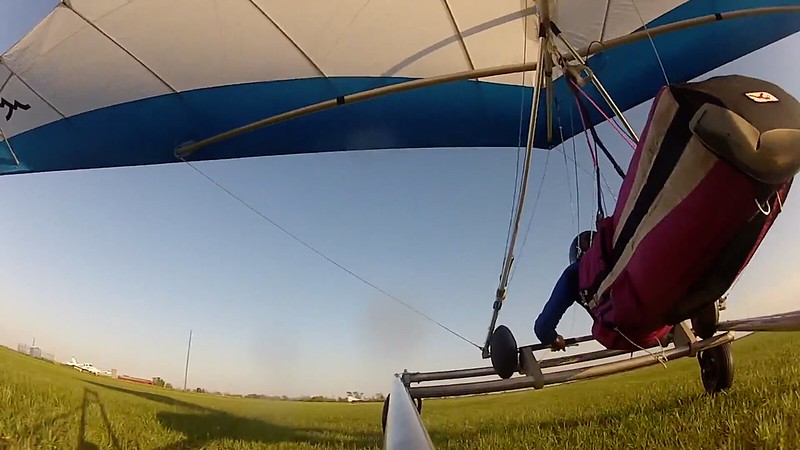
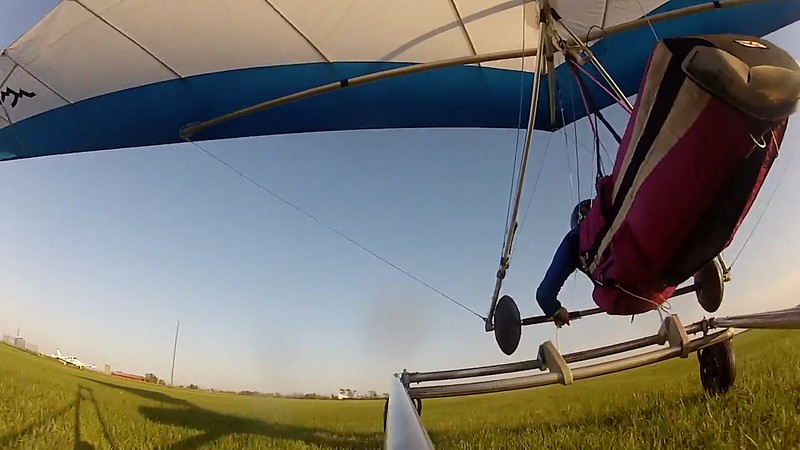
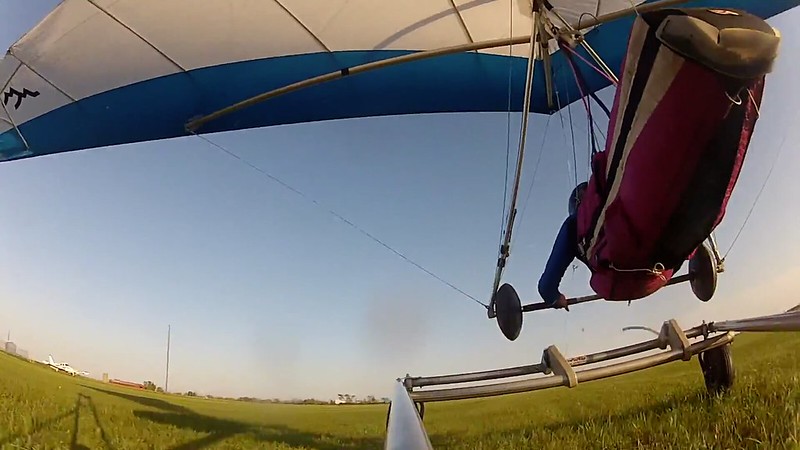
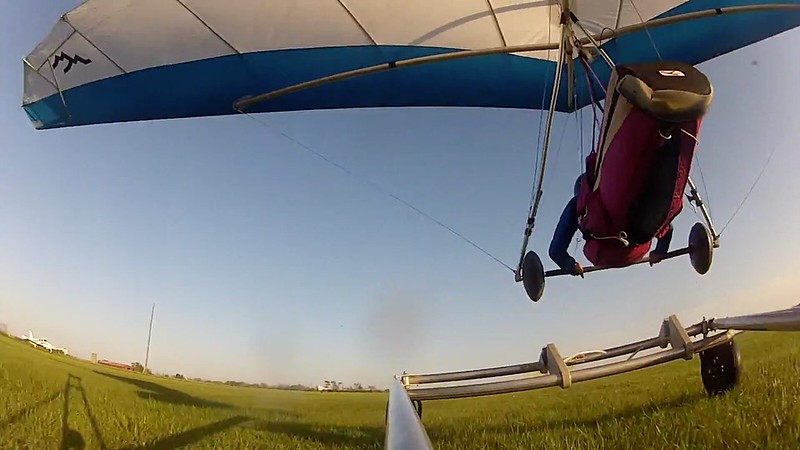
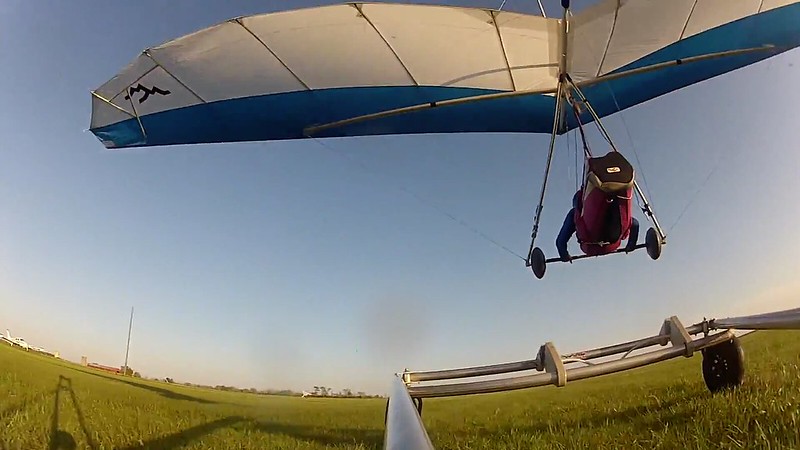
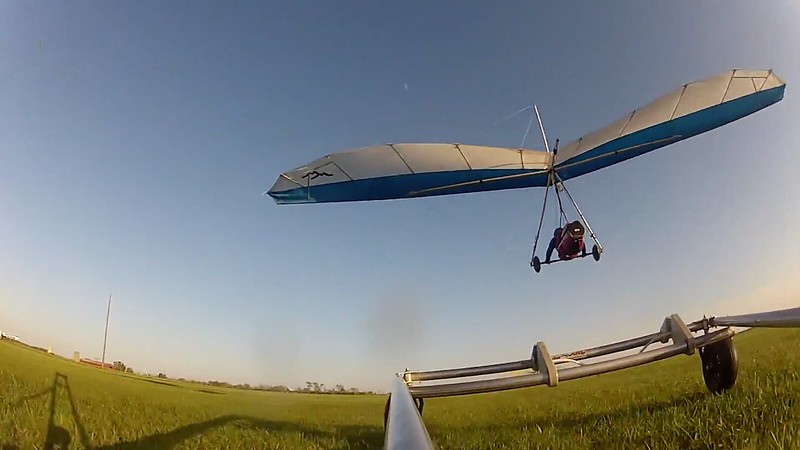

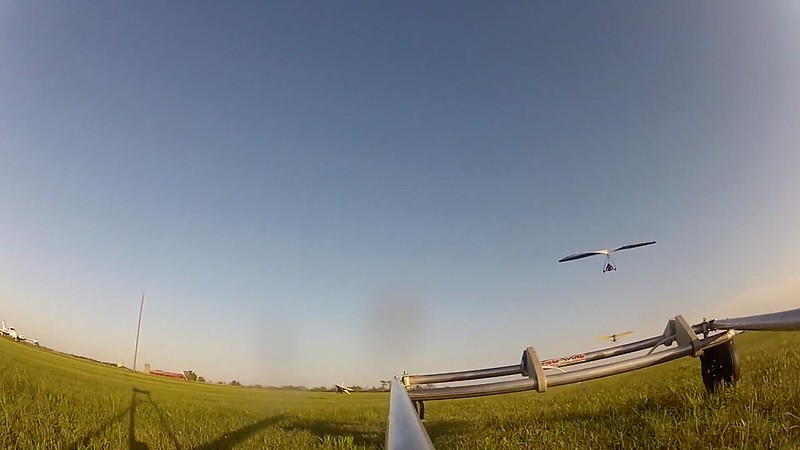

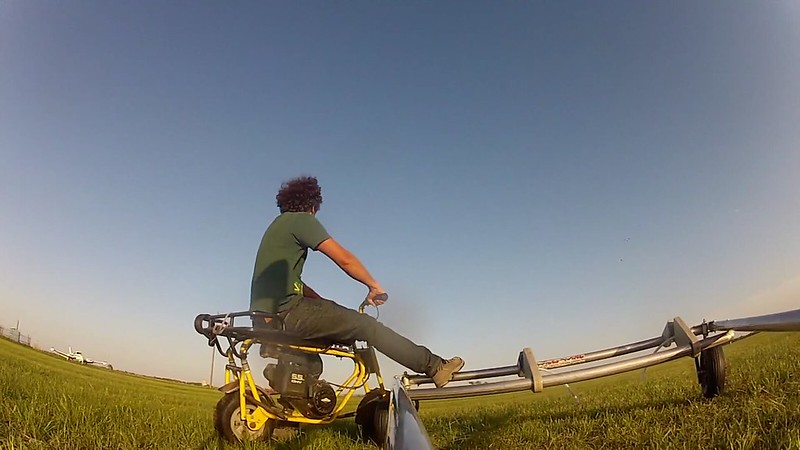
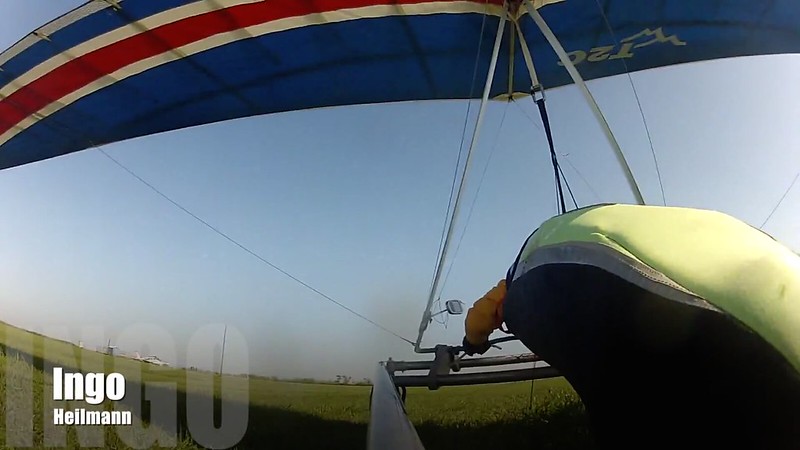
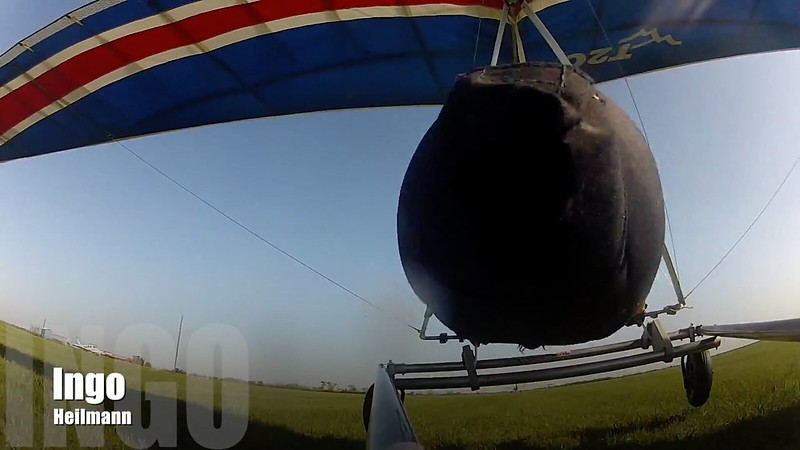



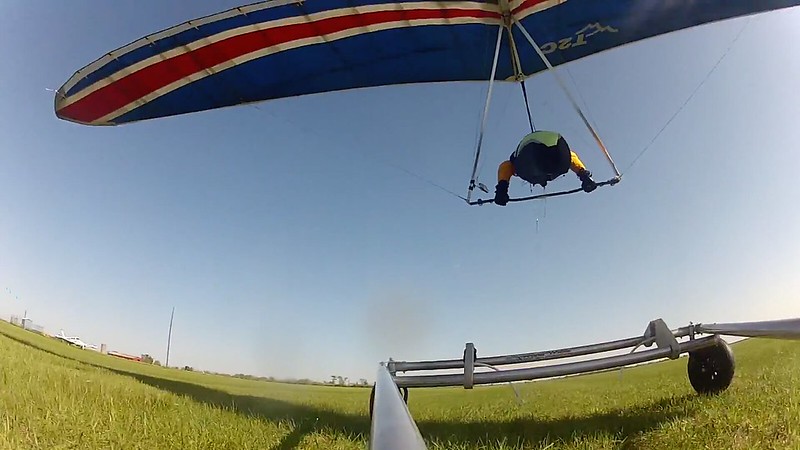

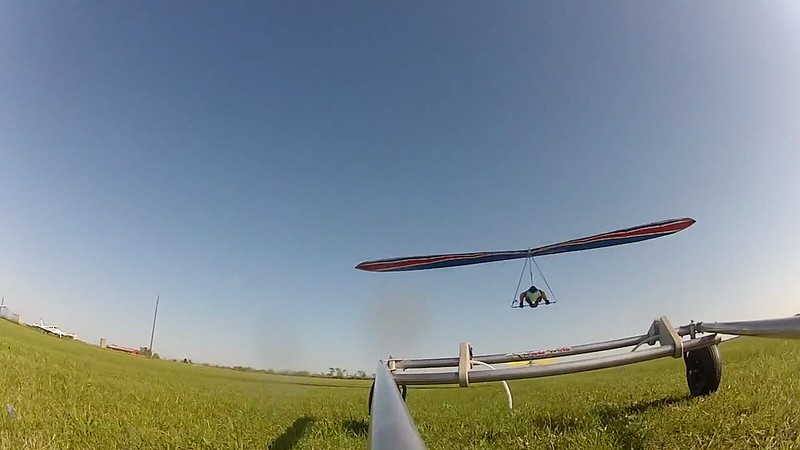



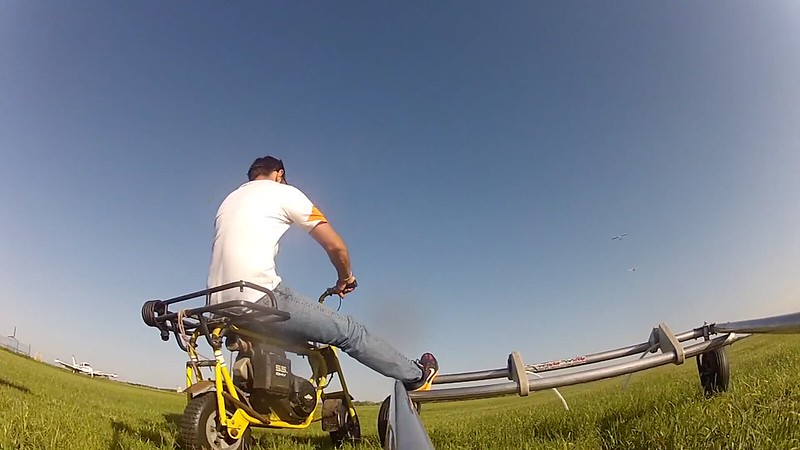

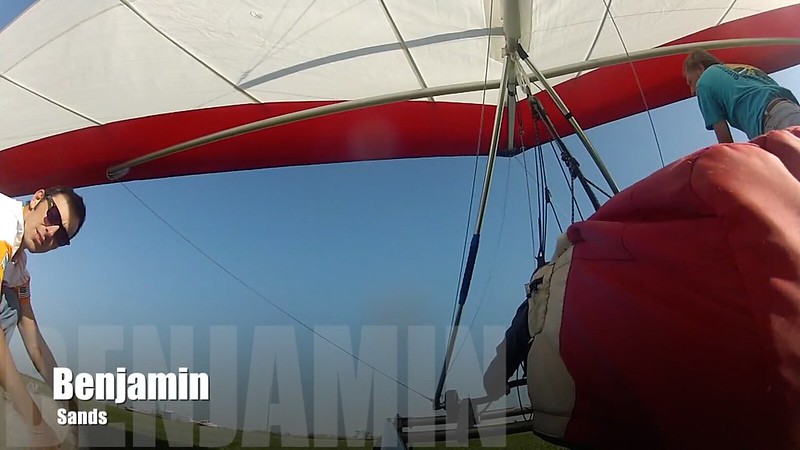
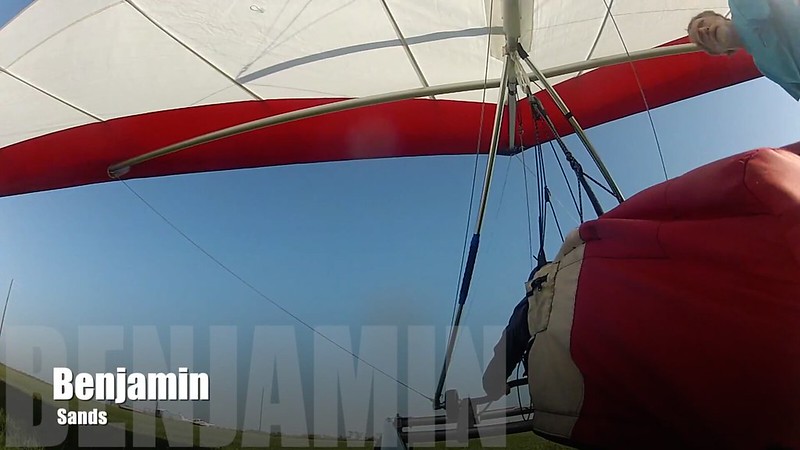
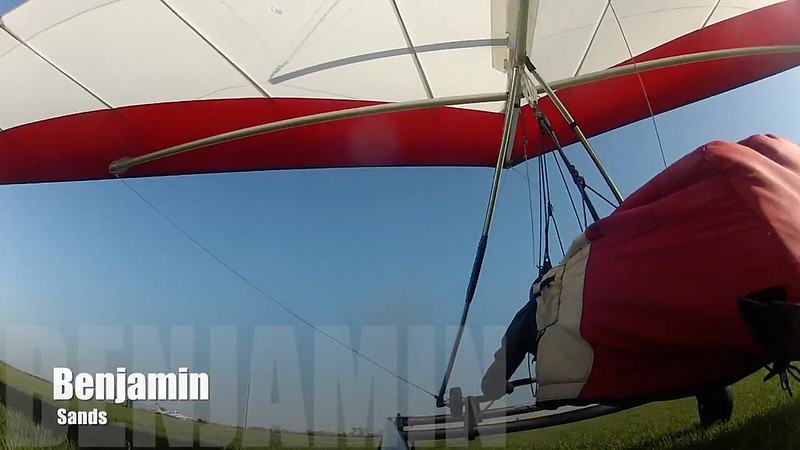

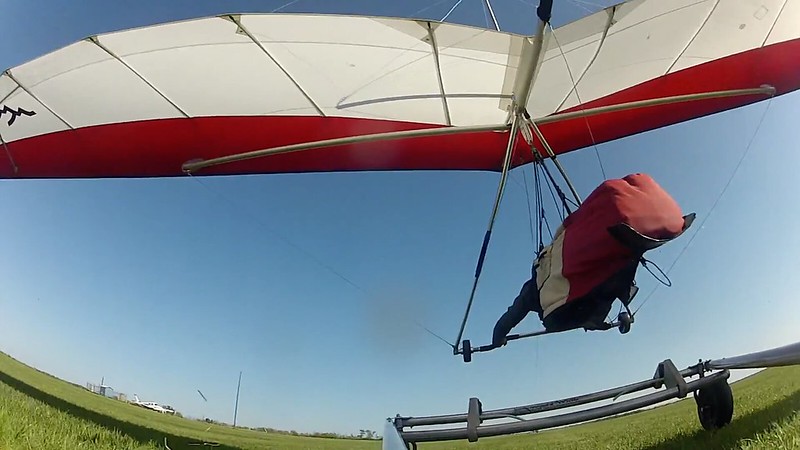

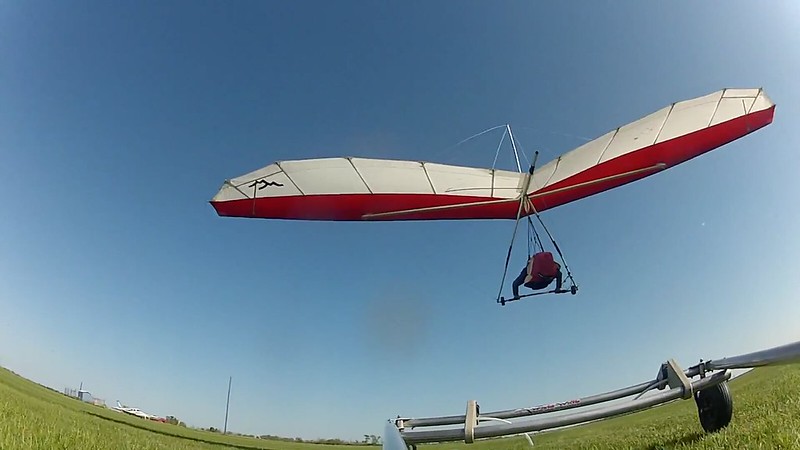
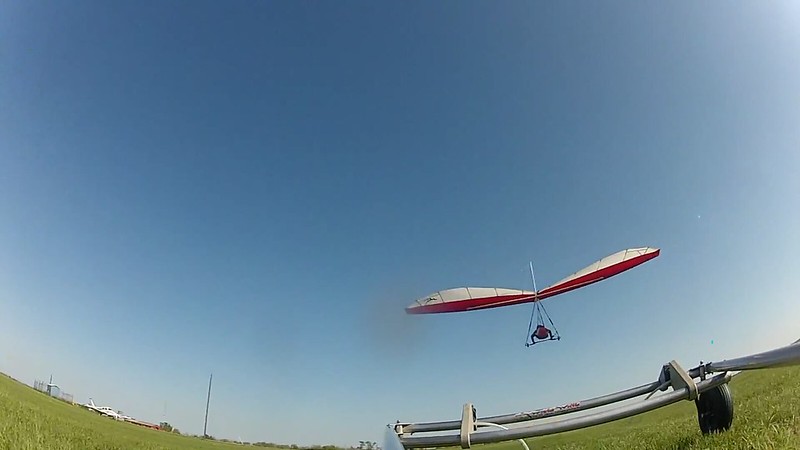
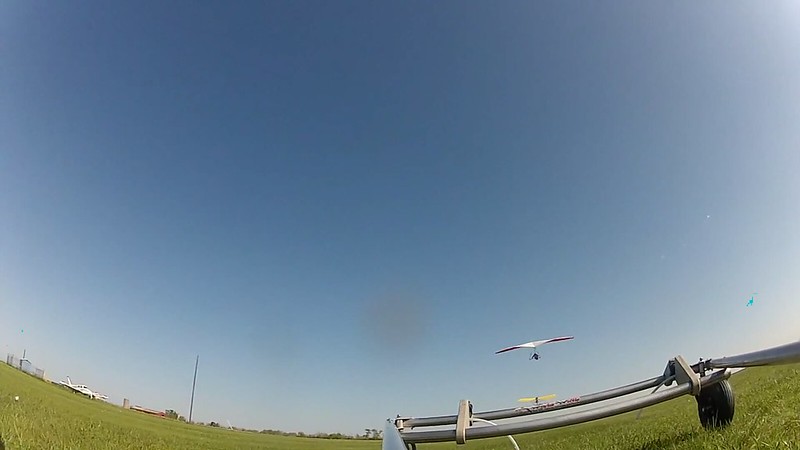
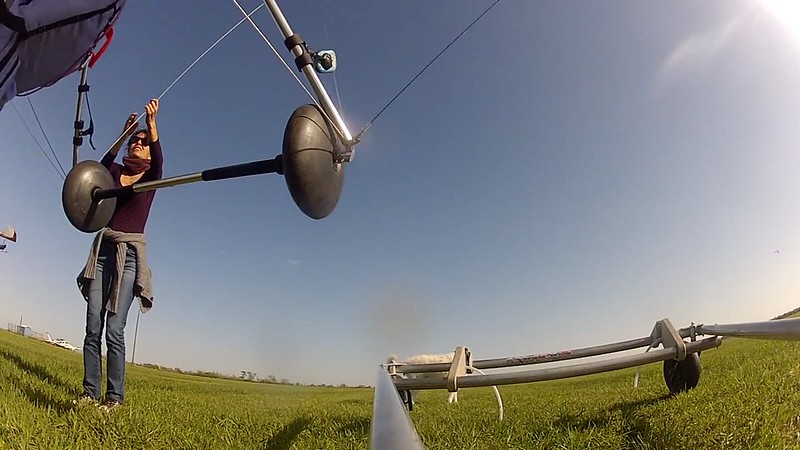


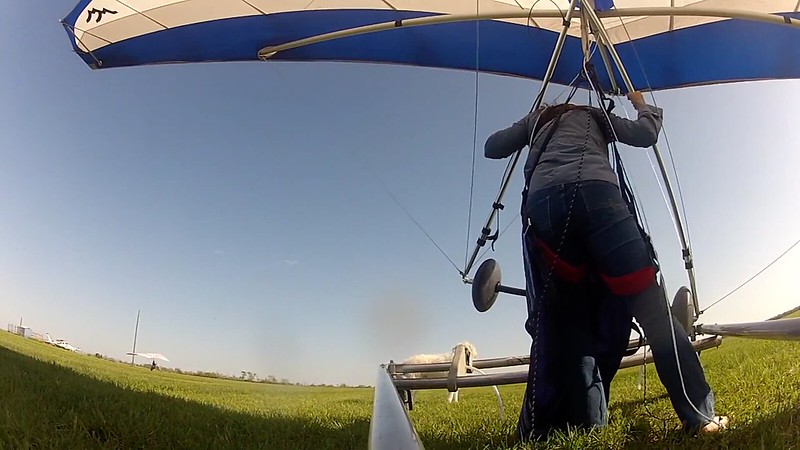
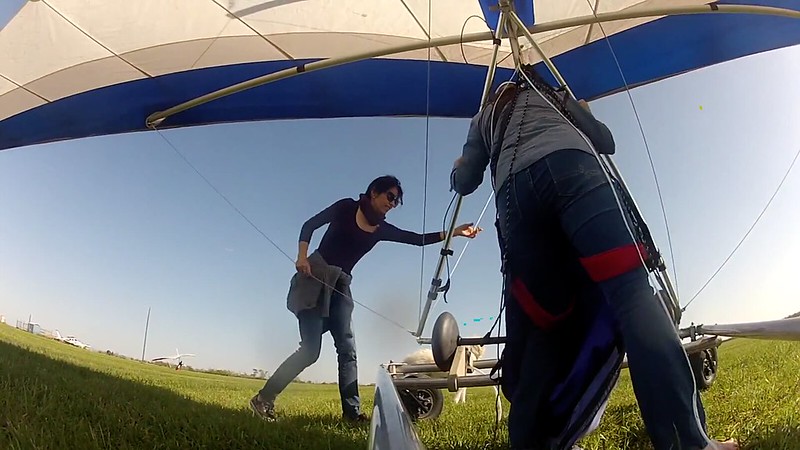
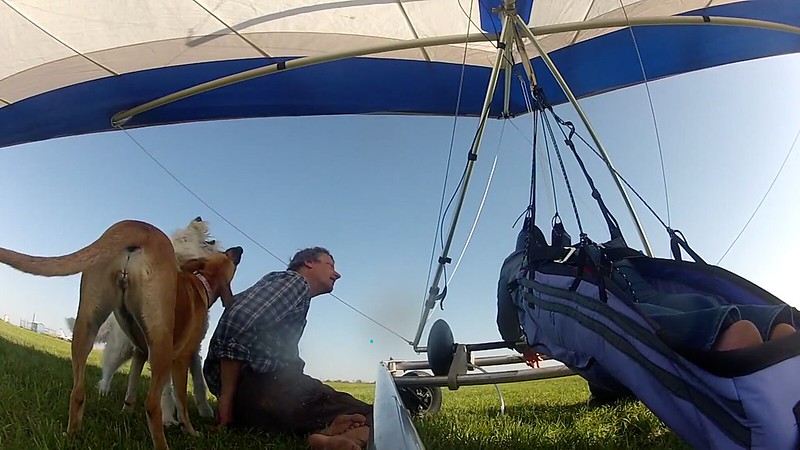

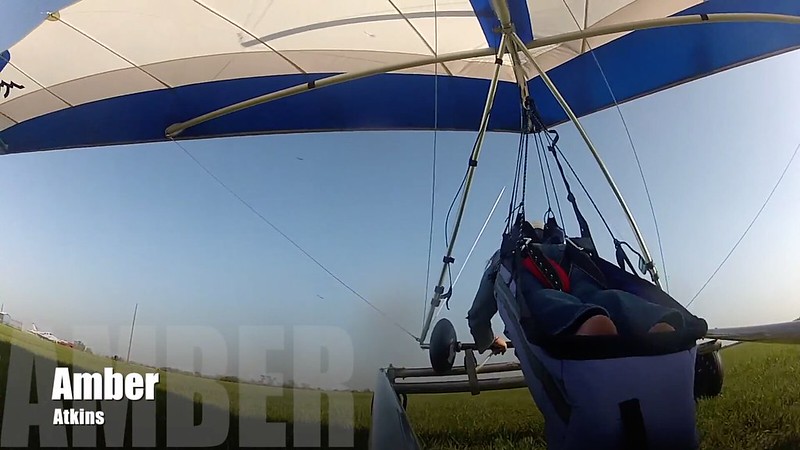

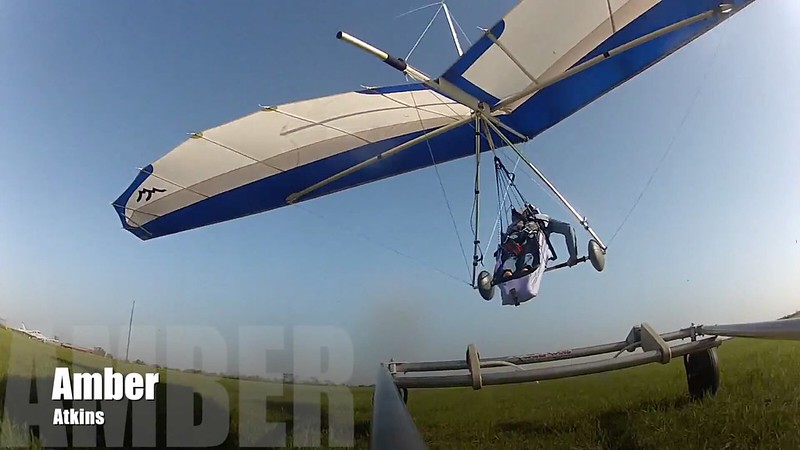
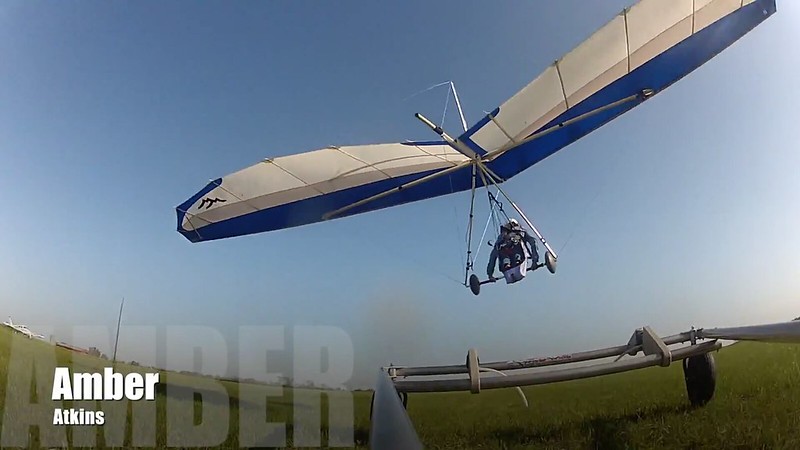
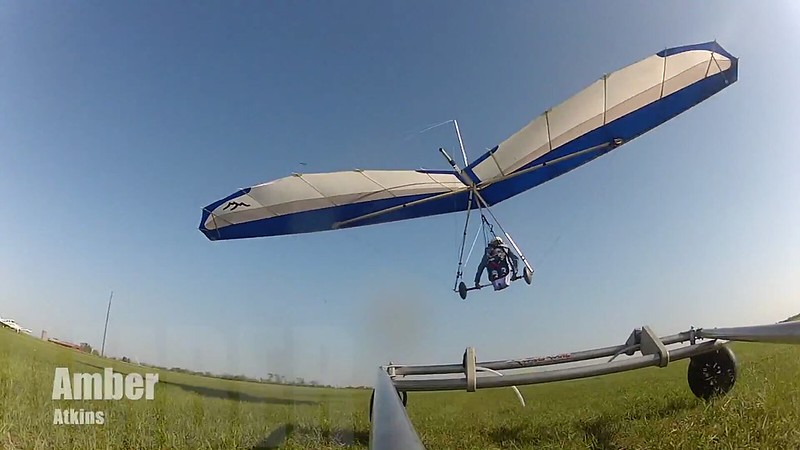
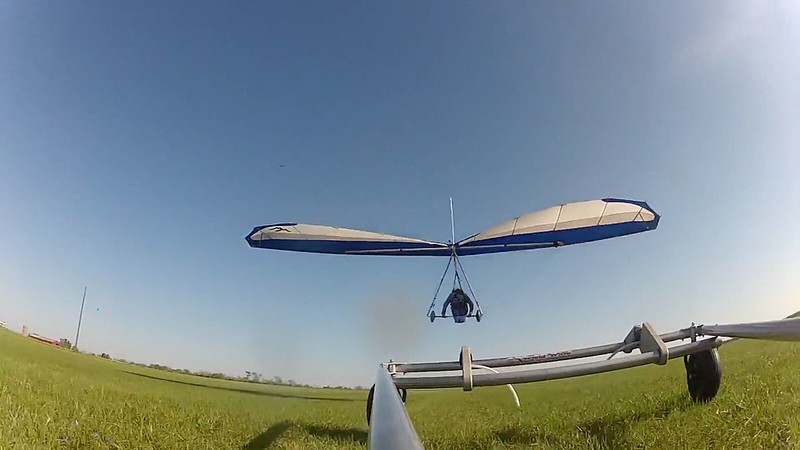


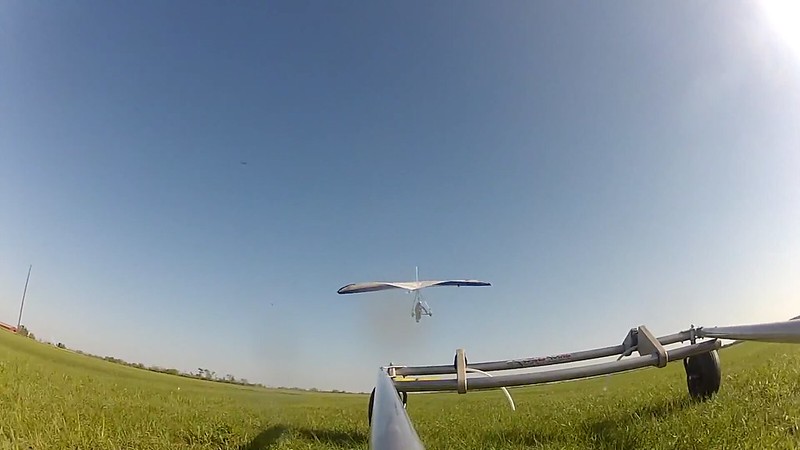

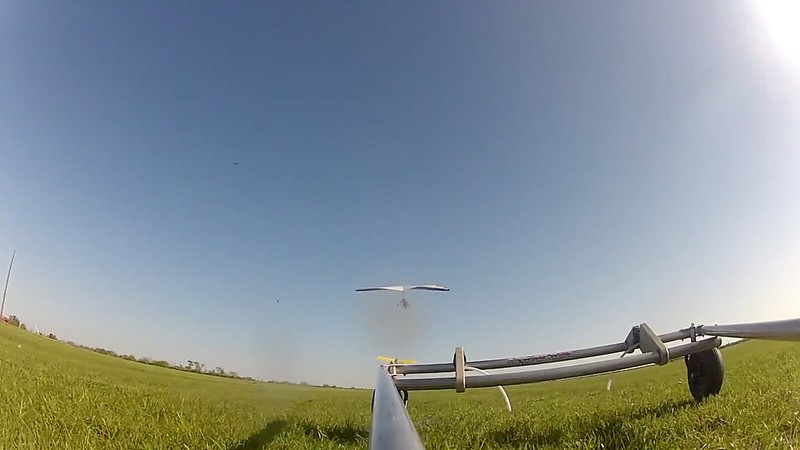
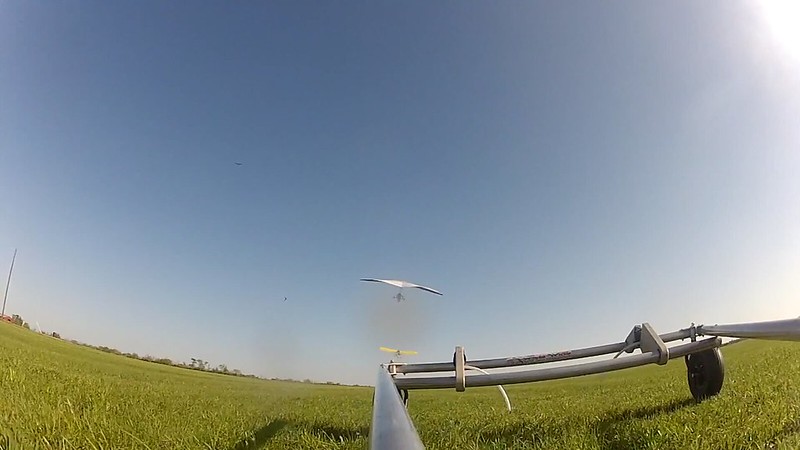

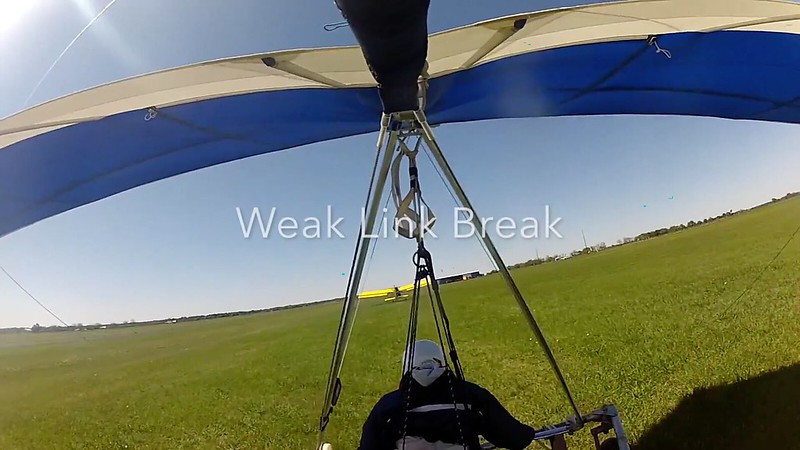
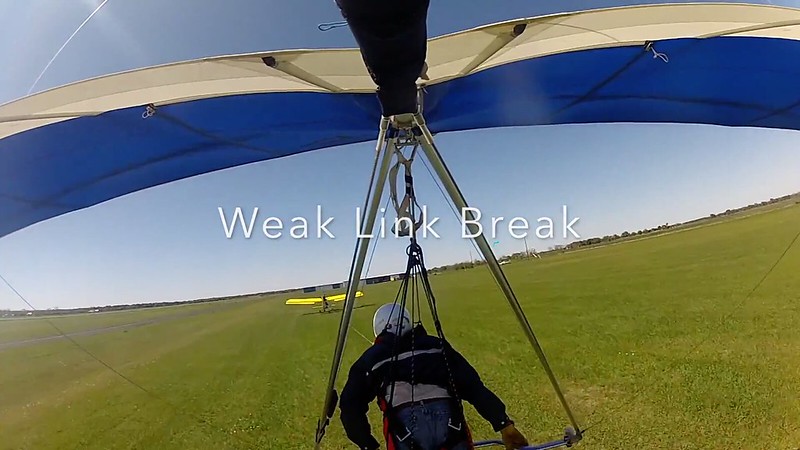
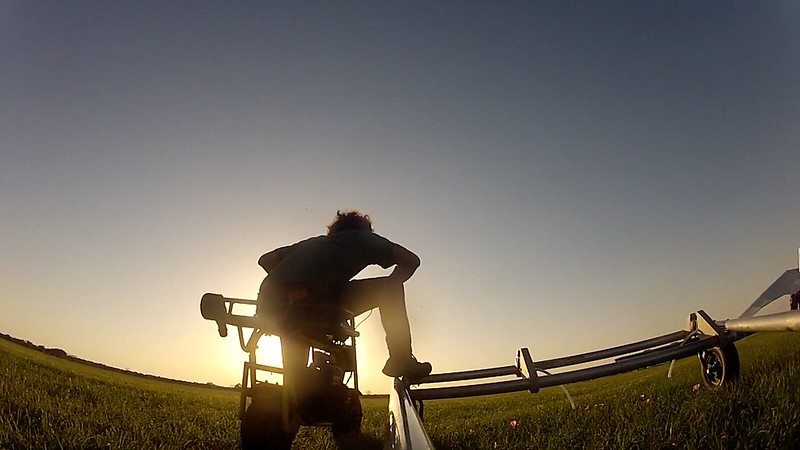



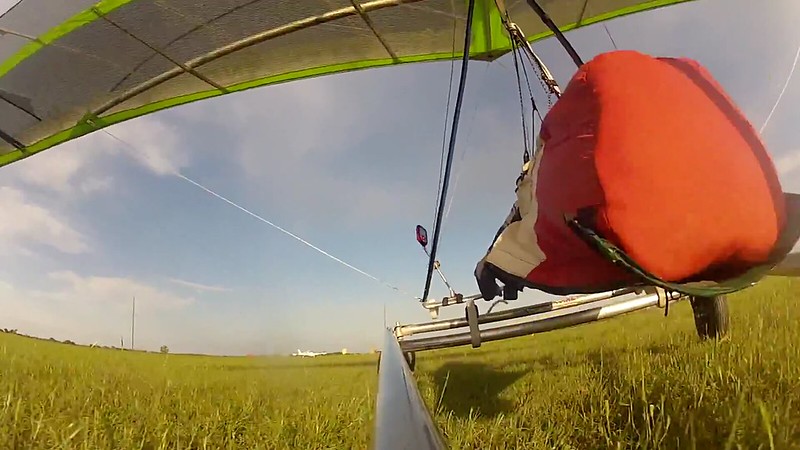

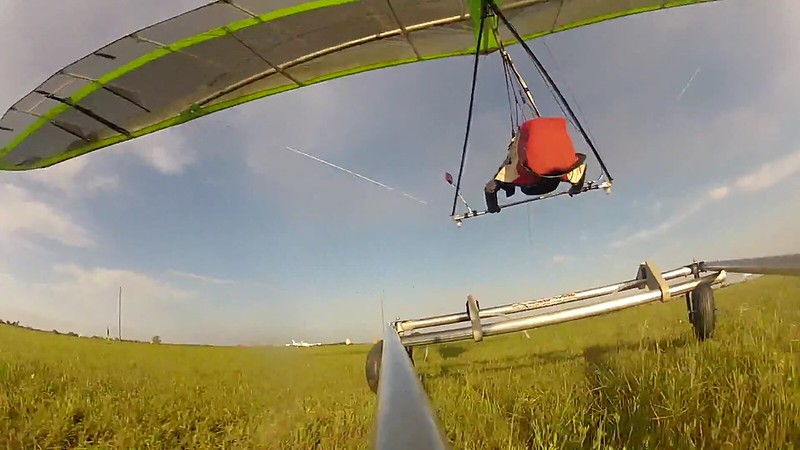

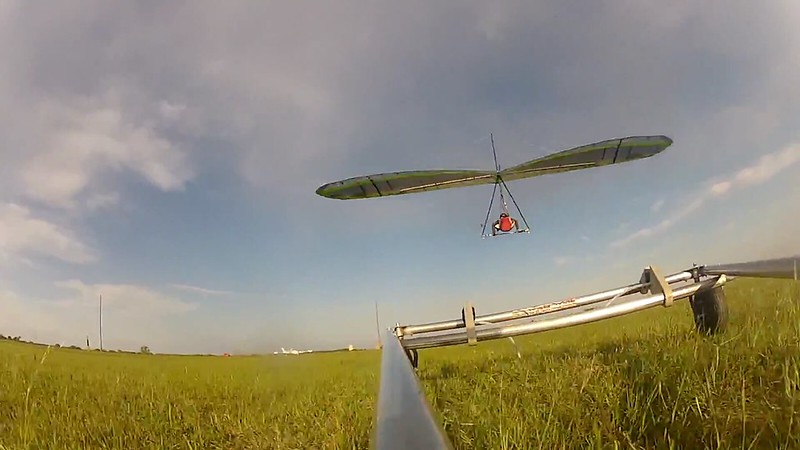
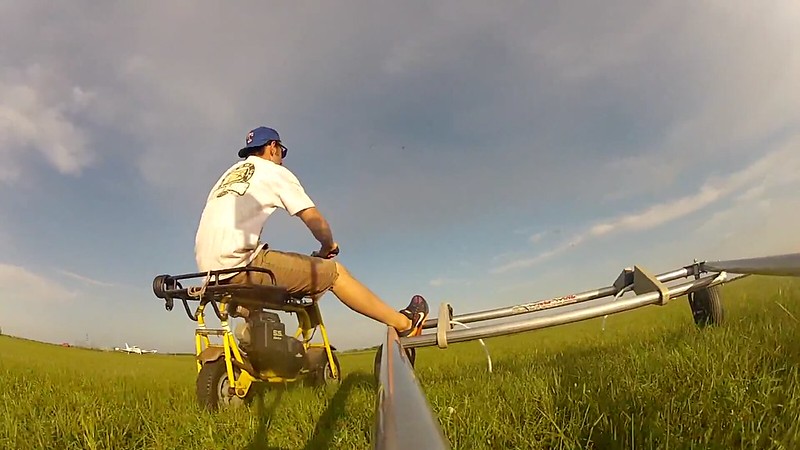
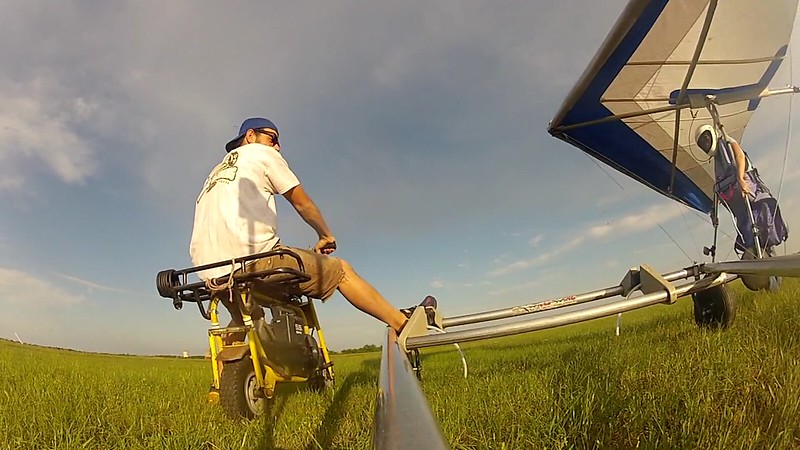

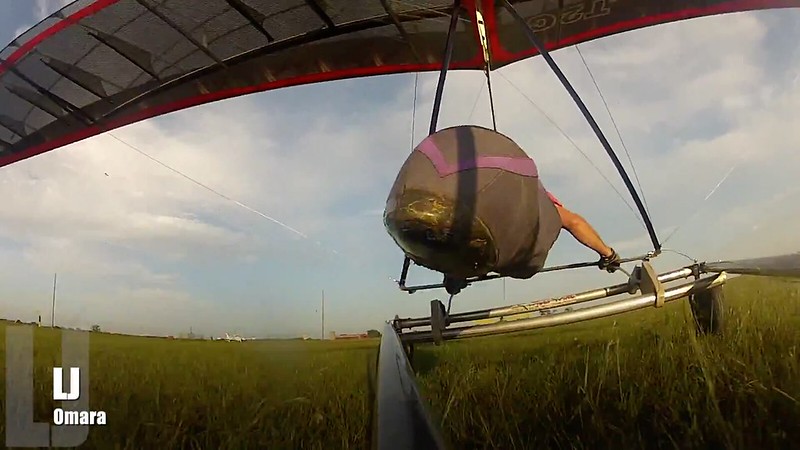

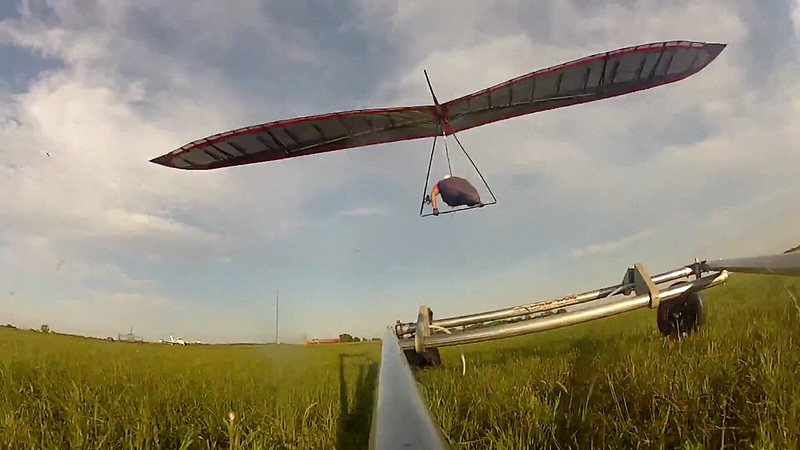

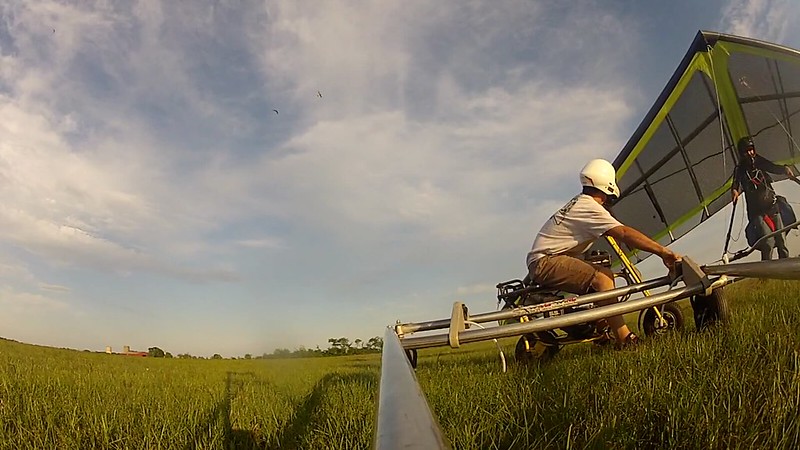




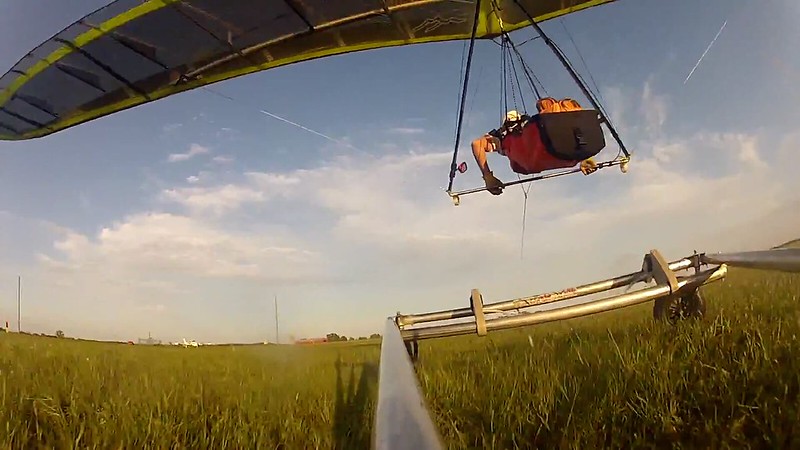
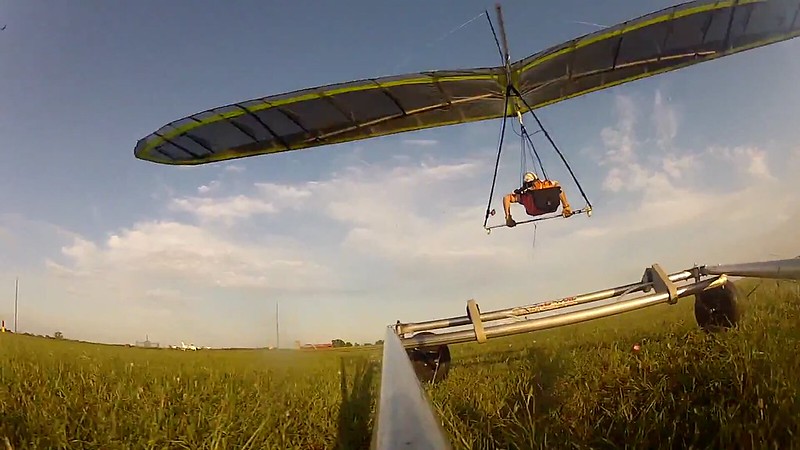

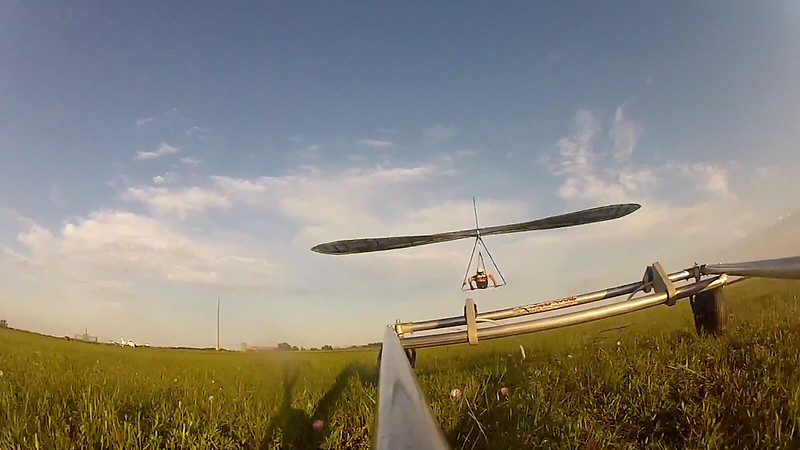
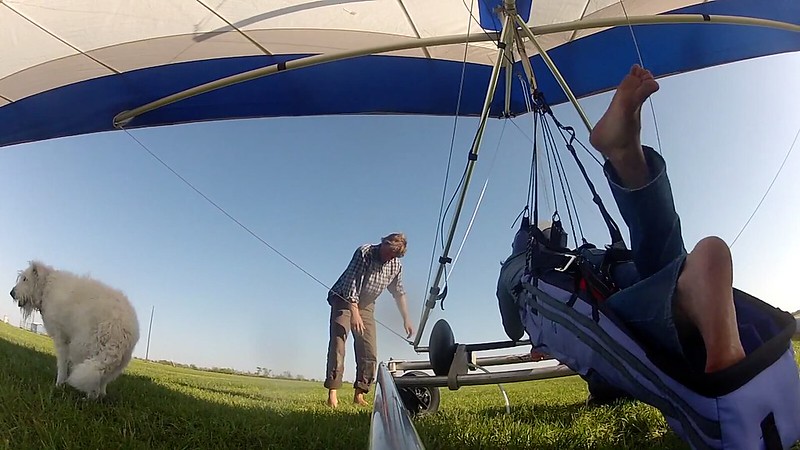
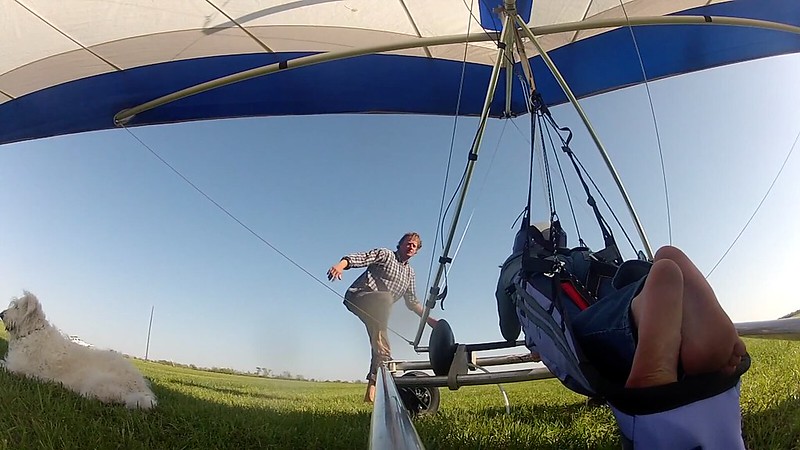
Supine Pilot - 2007/09/01 17:41:58 UTC
Pitch-over Concerns When Towing from a Cart Using a V-bridle (Especially if Supine)
I am reposting this from the "Leaving the Cart" thread as it was a bit off-topic there.
I wonder if the V-bridle, pilot to keel, tow method especially if combined with a poorly rolling cart may increase the probability of another type of potentially serious launch accident, the on-cart pitch-over.
Beware carts that shimmy or have high rolling resistance for any reason. If one is towing with a v-bridle, three point system (actually a two point system), the resultant of the pull force vectors are at an elevated point that gives a significant lever arm. This lever arm tends to rotate the nose down around the fulcrum (control bar base tube). Be especially careful not to pull in. Stay about at the trim point.
I roughly calculate that a 200 pound prone pilot using shoulder tow requires 400 pounds plus of pull (from cart drag) to tip over. The weak link should go first. When using a V-bridle attached about at the hang point on the keel, the resultant vector of the pull force (roughly half the distance from the pilot CG to the keel) provides about a 2.5 foot lever arm to help crank over the glider. Assuming that the anti-rotation force is 400 foot pounds (200 pound pilot CG 2 feet behind control base bar fulcrum point), the required tip-over force calculates to be 160 pounds of cart drag?? Granted, that would be a lot of cart drag, but wheel shimmy, rough ground, or high ground speeds could up the cart drag. Don't pull in. The two point method has been used mostly successfully for decades but more often with beginning or intermediate gliders that fly off the cart at lower speeds and may have more aerodynamic pitch stability at slow speeds?? Is the V-bridle a concern for the smaller, less twisted wings combined with bad carts?
If one were to tow a supine glider from a cart (would require elevated control bar brackets and tail bracket), the tip-over force would be even less. The pilot CG would be only 1 foot behind the fulcrum (due to the rearward rigging of the supine base bar). The hold down torque would be only about 200 foot pounds. The lever arm is again about 2.5 ft. The calculated tip over force is only 80 pounds of cart drag. Foot launching would be much safer.
With as much total crap being spewed over there as there is what could it possibly matter?I am reposting this from the "Leaving the Cart" thread as it was a bit off-topic there.
There are no carts that shimmy or have high rolling resistance for any reason. Shimmy is a fundamental design issue that can't be tweaked out. And rolling resistance? The bearings are shot and nobody's doing anything about it? (Or maybe the tires are flat - like they always were at Ridgely. Until Yours Truly would do those douchebags' jobs for them.)Beware carts that shimmy or have high rolling resistance for any reason.
Then why dignify and empower these assholes bringing up "three point" at all. Call it what it is. Nobody's stupid enough to refer to pilot only as "two point" so there won't be any misunderstandingsIf one is towing with a v-bridle, three point system (actually a two point system)...
Rubbish. This is a total nonissue. You're proned out in certified flying configuration and even if something were to start happening, which it never does, you'd instinctively push out and shift your CG aft - just like when you're fully airborne....the resultant of the pull force vectors are at an elevated point that gives a significant lever arm. This lever arm tends to rotate the nose down around the fulcrum (control bar base tube). Be especially careful not to pull in. Stay about at the trim point.
'Specially when you're behind a 914, stay on the cart too long, slam into that brick wall of propwash.I roughly calculate that a 200 pound prone pilot using shoulder tow requires 400 pounds plus of pull (from cart drag) to tip over. The weak link should go first.
Yeah, when was the last time we've ever heard about AT foot launching being the slightest problem.Foot launching would be much safer.

You just entered the conversation. Good luck with that.Jim Rooney - 2007/09/01 18:09:04 UTC
Yeah, this seems like a better place for this.
Thinking, writing coherently...The limited experience I have with supine and suprone towing...
What weak links are they flying nowadays?Mainly Rhett and Jason down at Quest. Both very experienced pilots.
High chalks. Like the White Cliffs of Dover. 350 feet. Why not just skip the AT altogether?Jason flies suprone and Rhett supine.
Rhett just flies off the cart... it's nearly identical to prone, you're just sitting. No worries.
Jason switched from towing off high chalks and went back to footlaunching due exactly to the concerns you note. He felt that the usual concerns of footlaunching were outweighed by the problems associated with high chalks.
2013/09/17 09:16
Steve Pearson
It's so cool to have Steve Pearson here competing with us this year. Steve is kind of the godfather of hang gliding here in the US - one of the founders of Wills Wing, designer of everything from the HP to the latest T2C and everything in between, a pilot for 300 years or so (maybe closer to 40and just a general, all around great guy.
I don't know that Steve has ever competed, other than the Morningside glider angle contest, but he's impressing everyone making goal 2 out of 2 days so far. It's great to have him here!
http://1.bp.blogspot.com/-2lk6hbjuJ-c/Ujh-ENPLQrI/AAAAAAAA3IQ/vh46chqQX4M/s1600/JRS_0542.JPG
JG - 2013/09/17 11:05
Sure is great to see the designer in a meet, flying what he designs! Maybe some day we'll see Gerolf and Steve flying in the same comp!
http://ozreport.com/forum/viewtopic.php?t=63023Col Rushton - 2020/03/27
From leaving the launch dolly, until releasing from behind the tug. The views just get better of the Darling Downs around Dalby ..
Zack C - 2011/06/16 03:14:35 UTC
I've never aerotowed pilot-only but it is my understanding that this configuration pulls the pilot forward significantly, limiting the amount he can pull in further.
Col's head is entirely chopped off for damn near the entire tow. Compare/Contrast at 42-50904 after we've been off tow for half a minute, cleared the VG cord, started flying in normal certified mode. But never allow any taint of reality to begin to interfere with any of your opinions.Davis Straub - 2011/06/16 05:11:44 UTC
Incorrect understanding.


